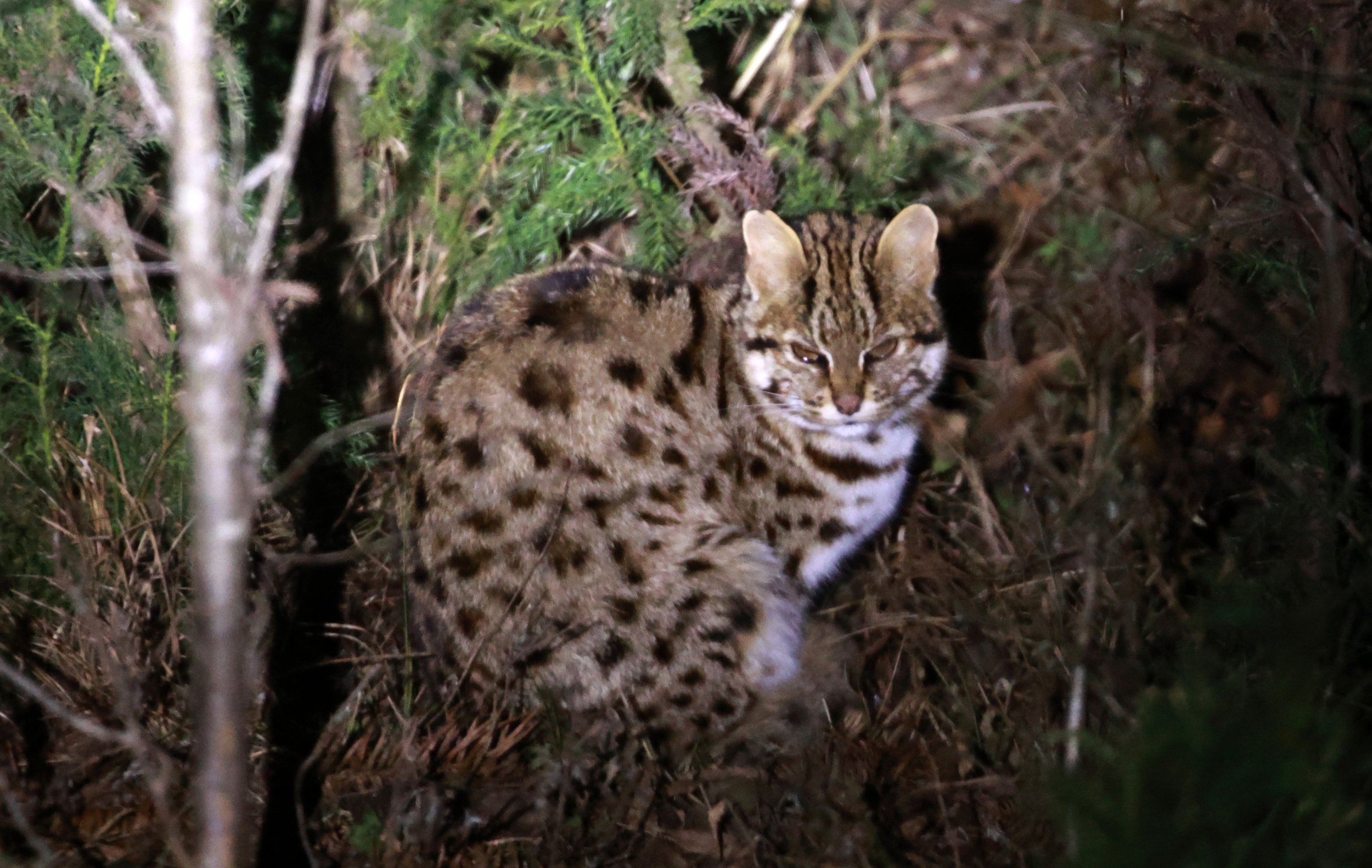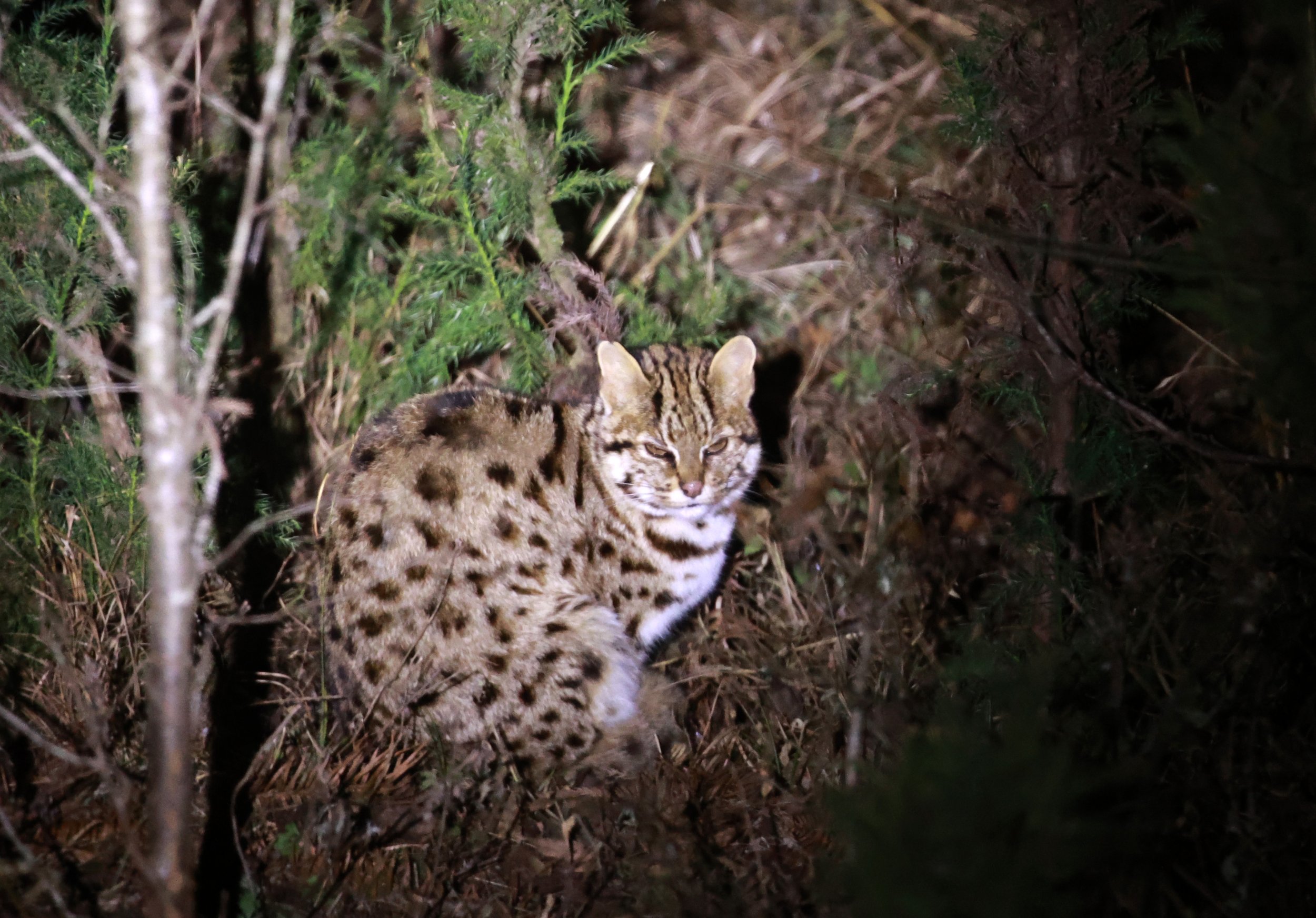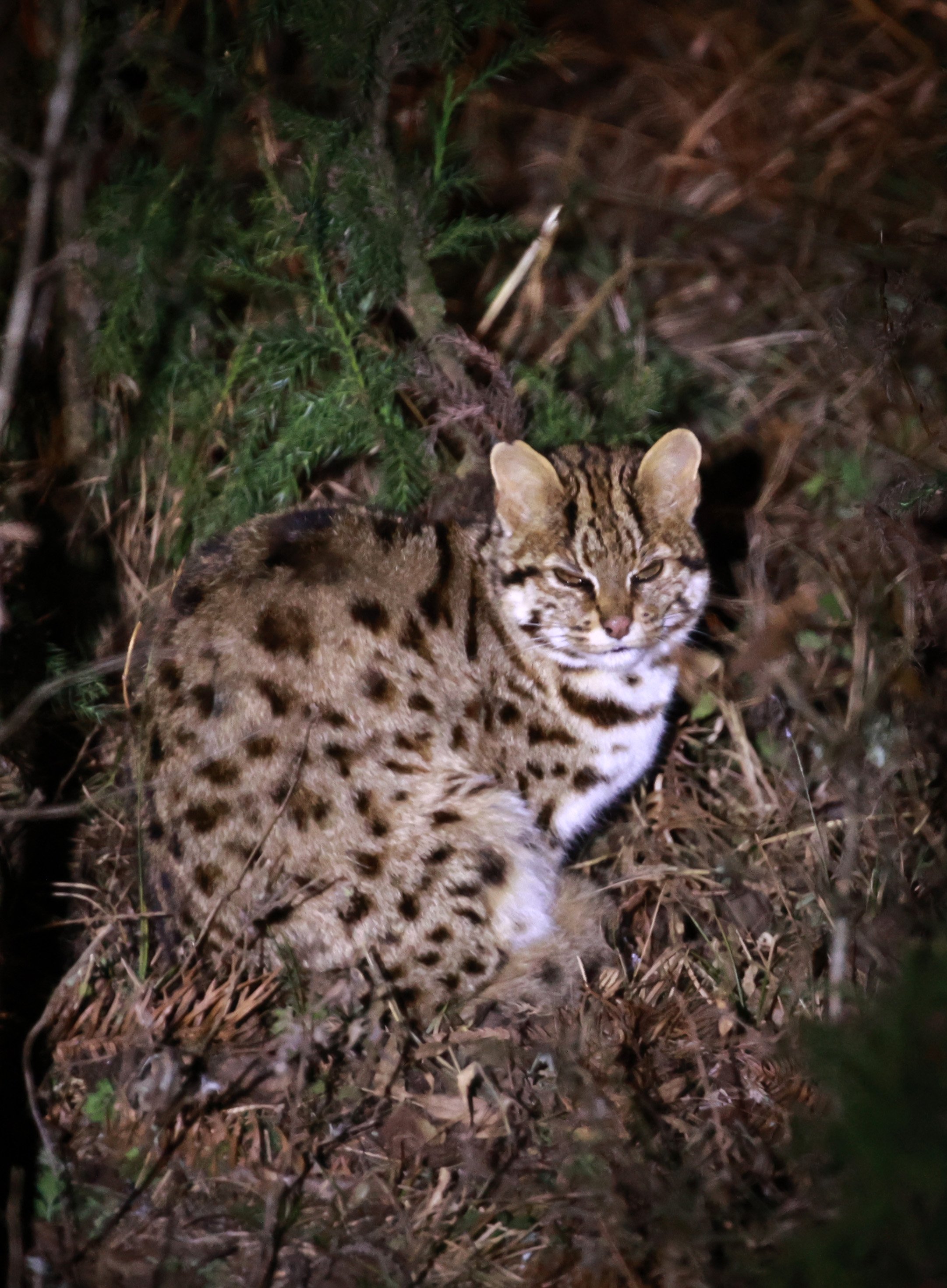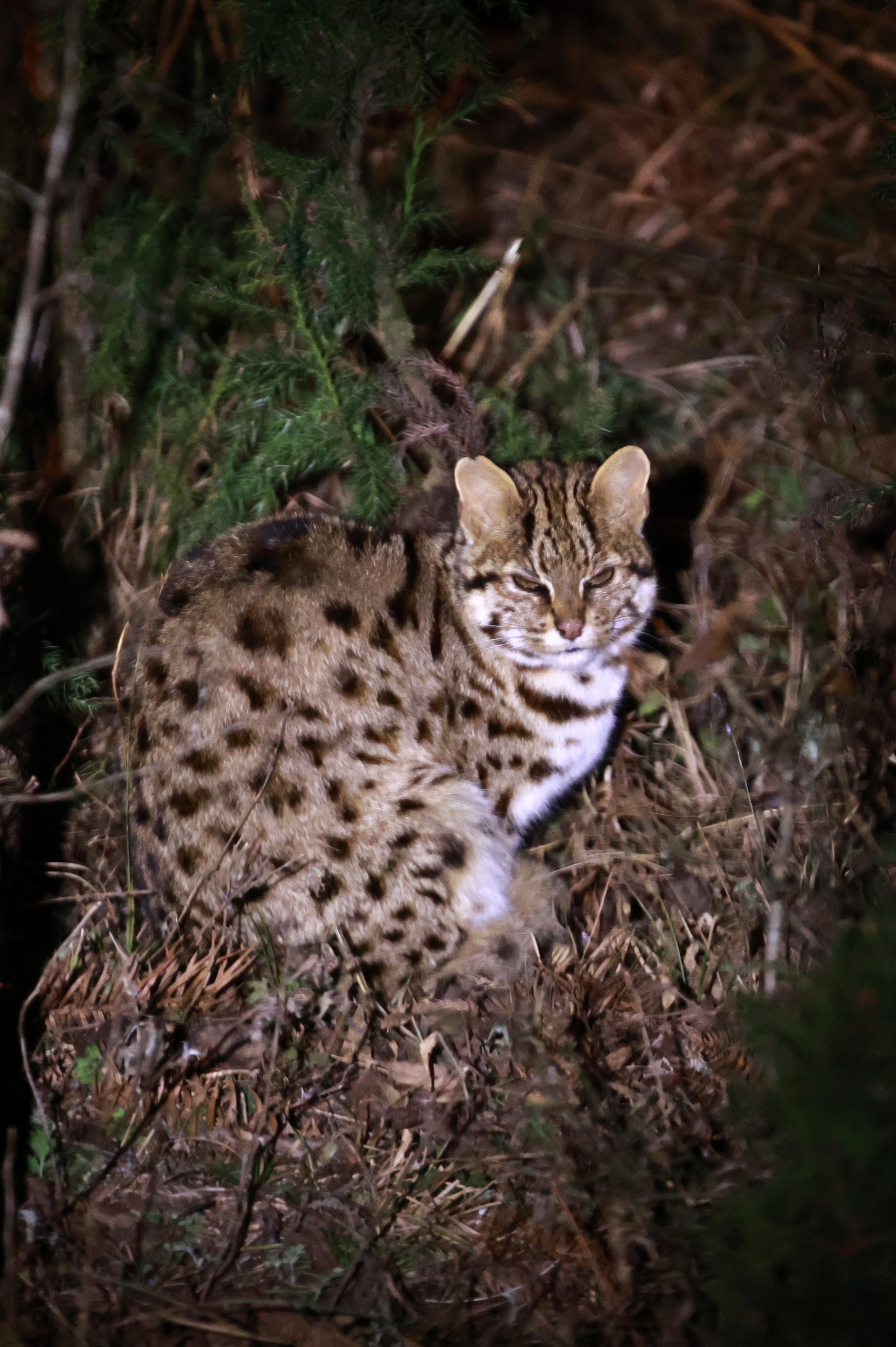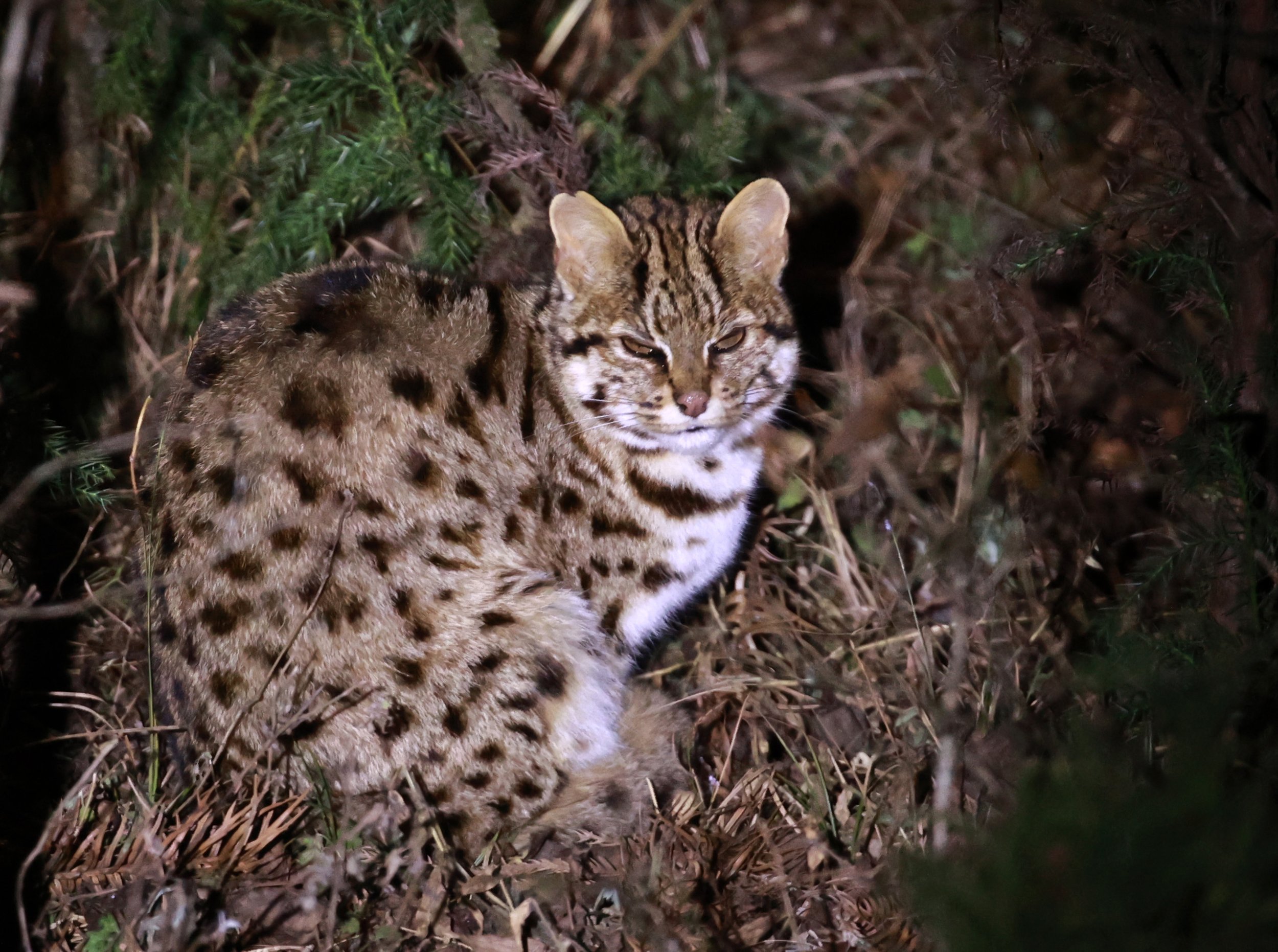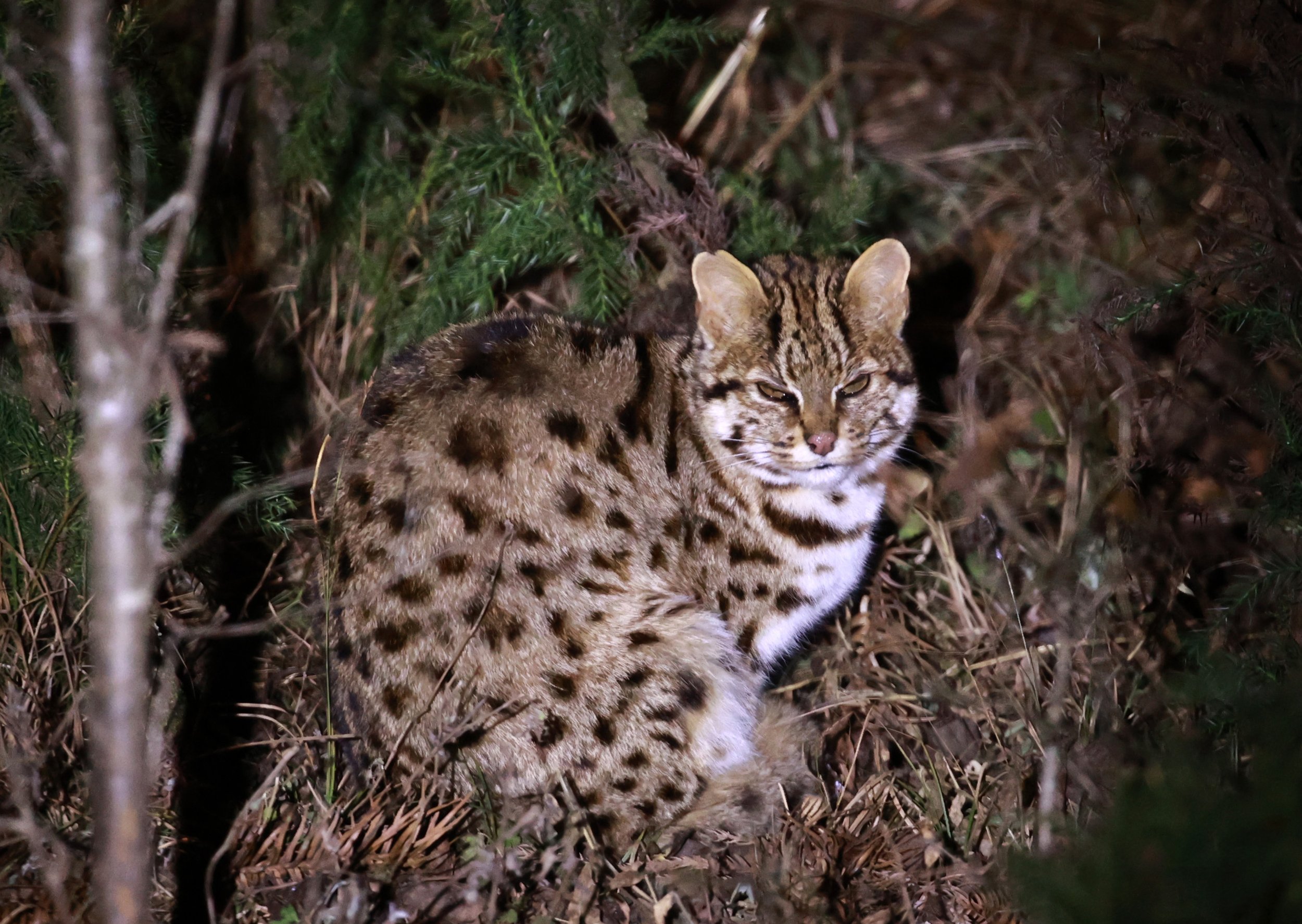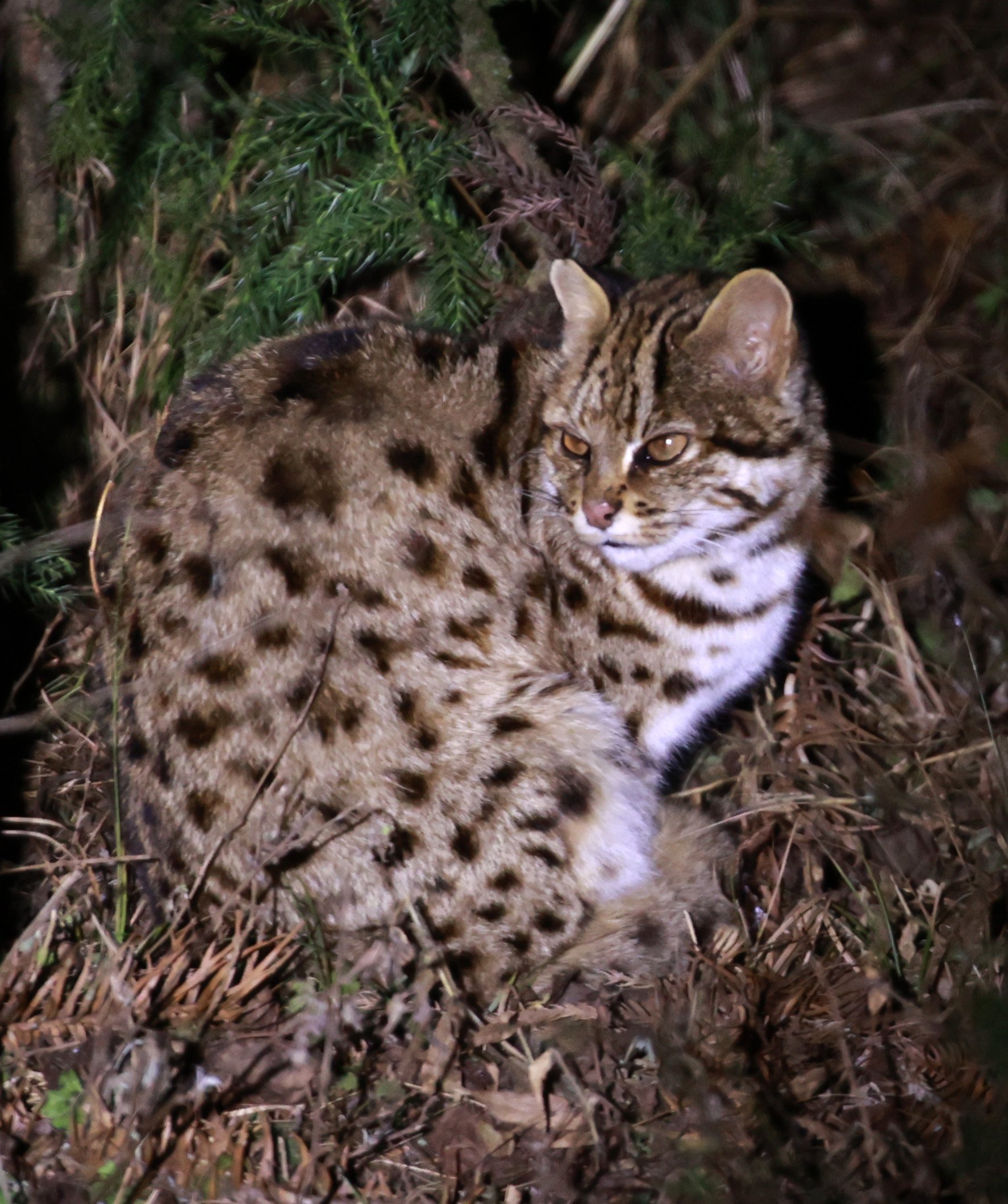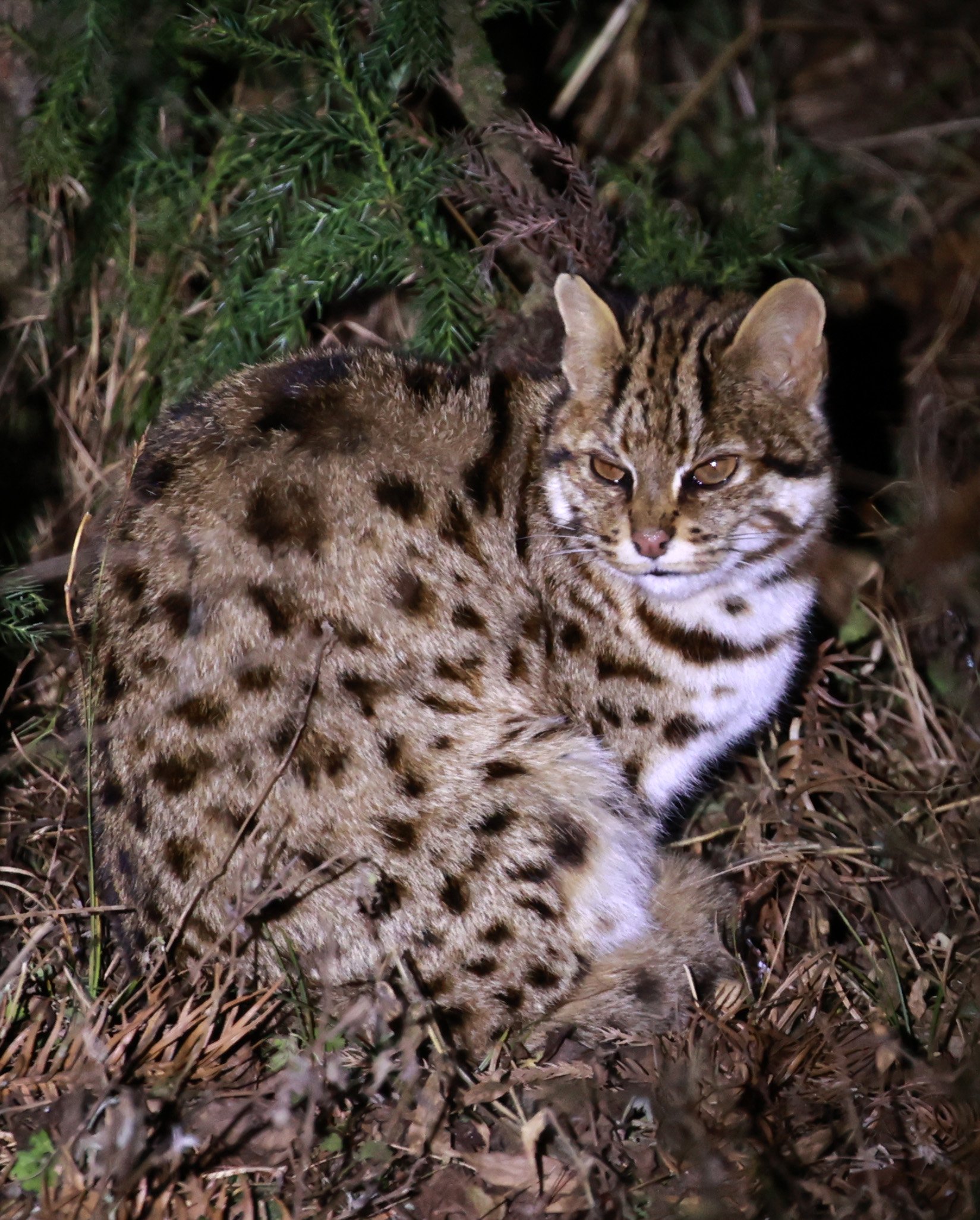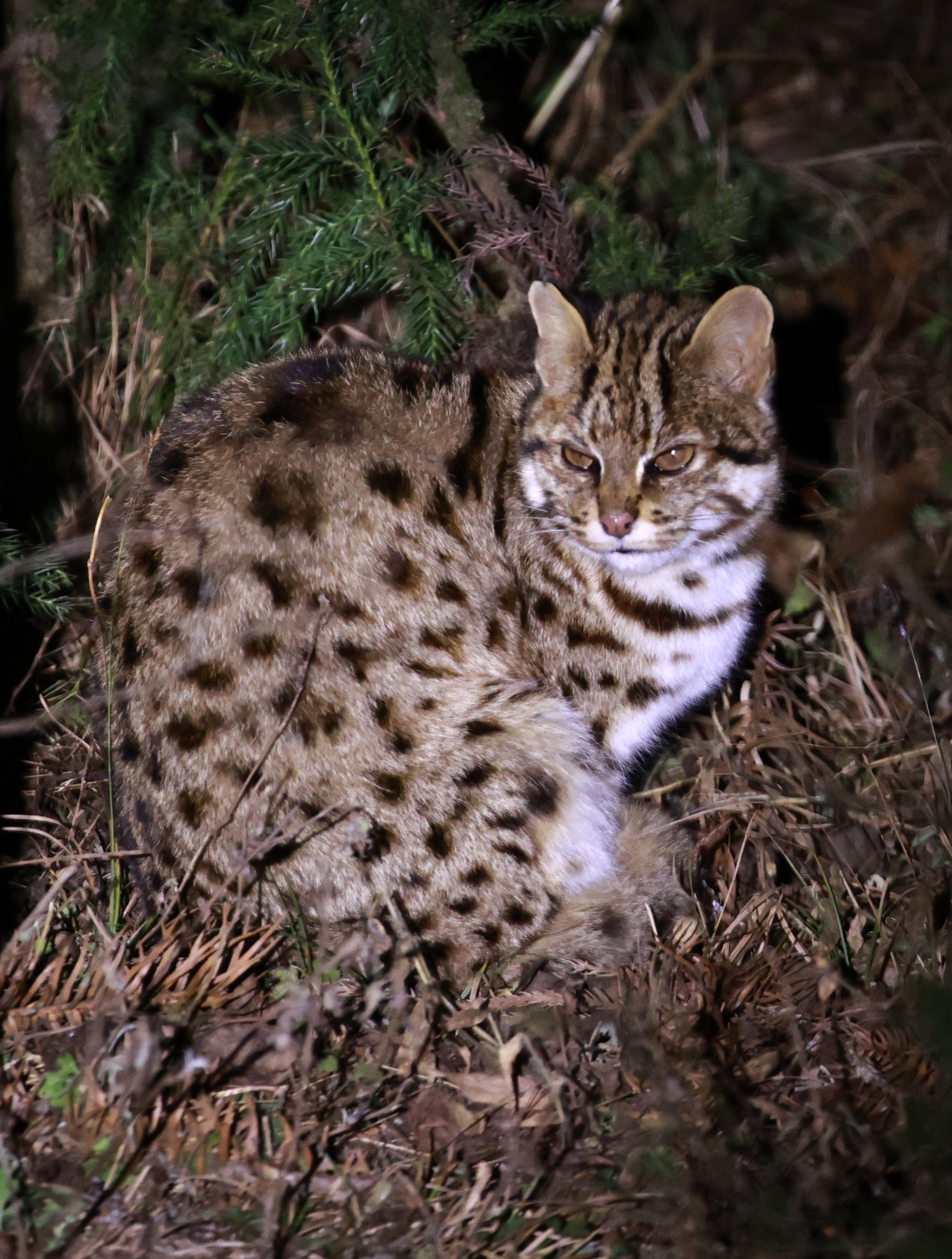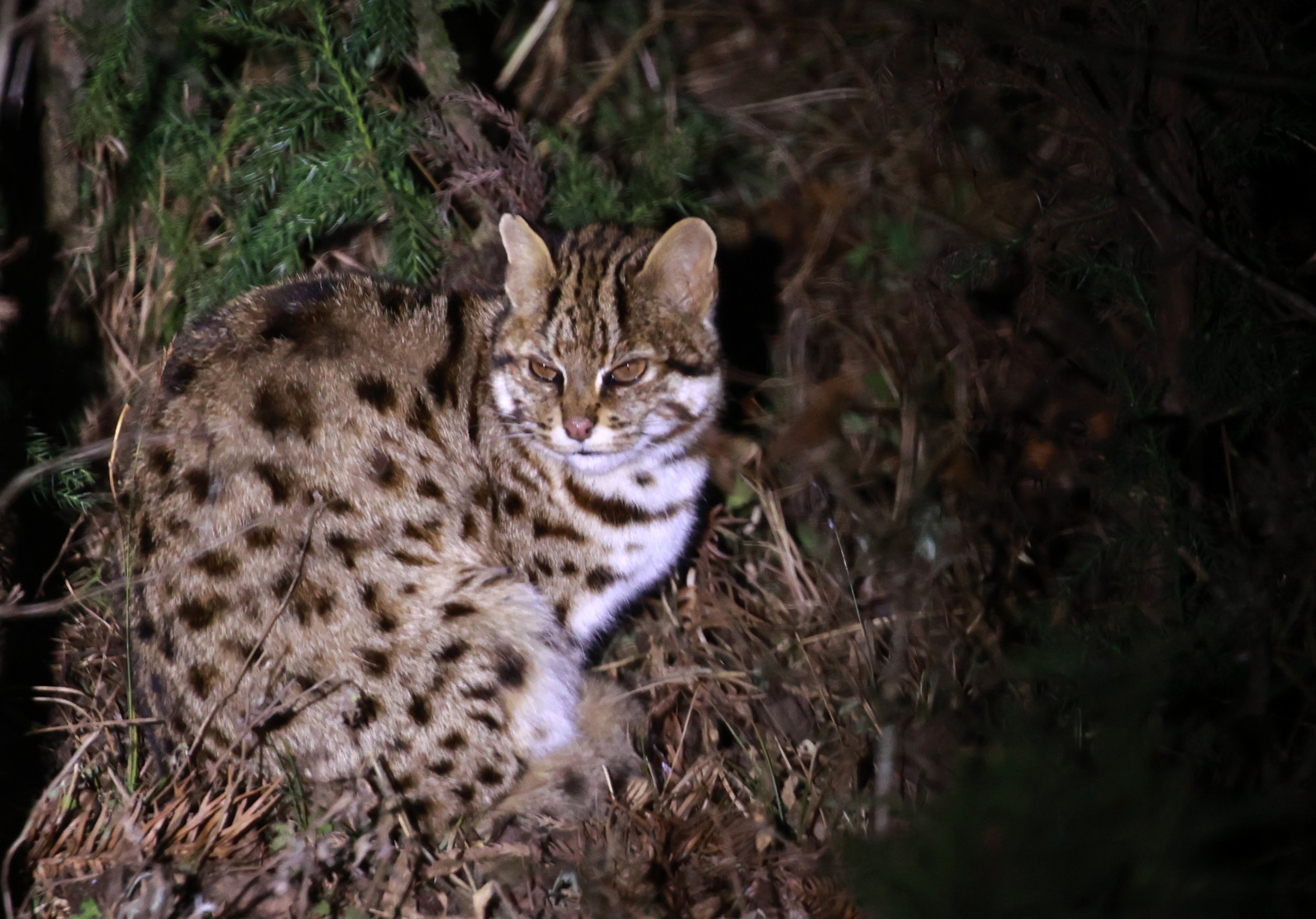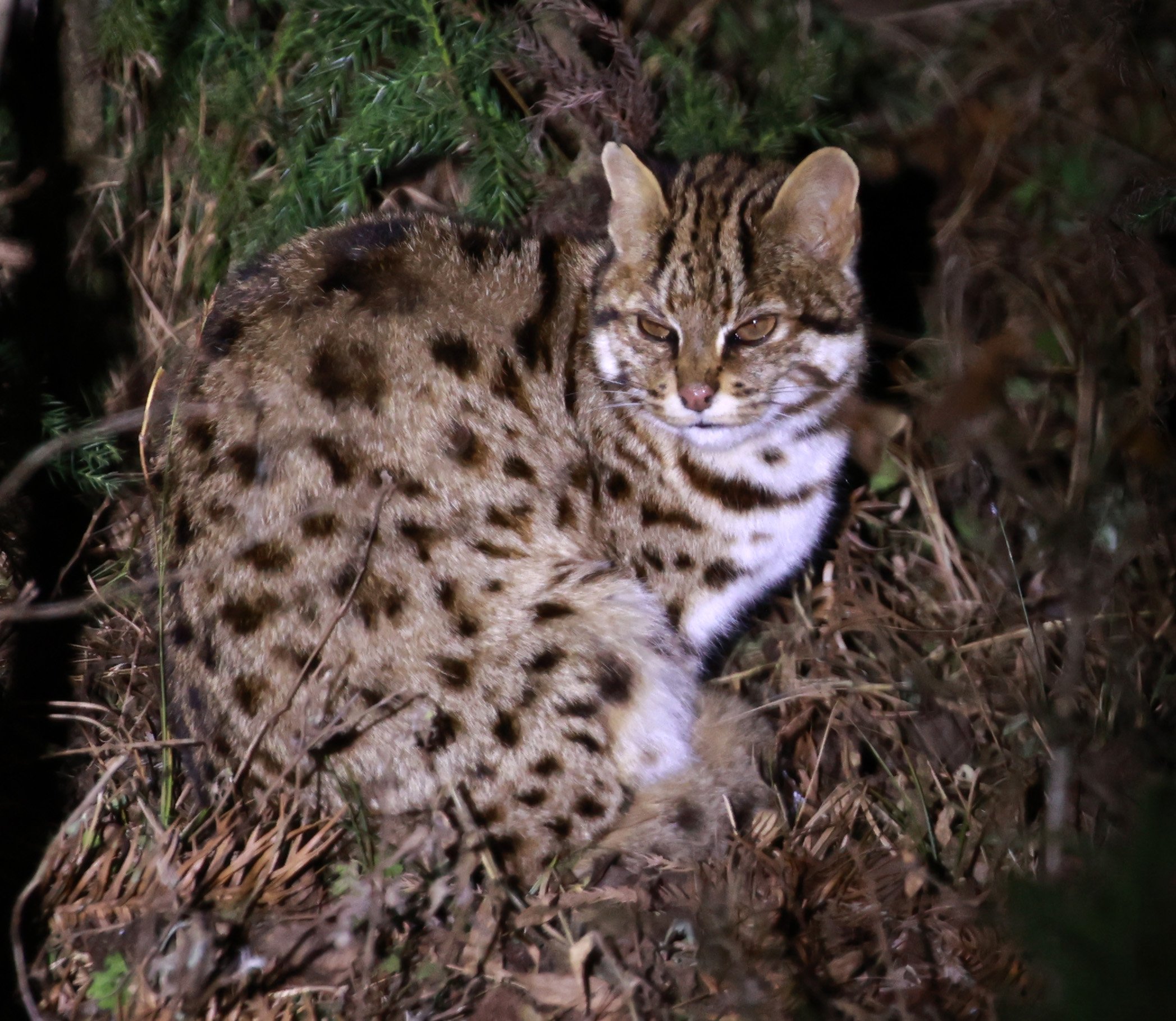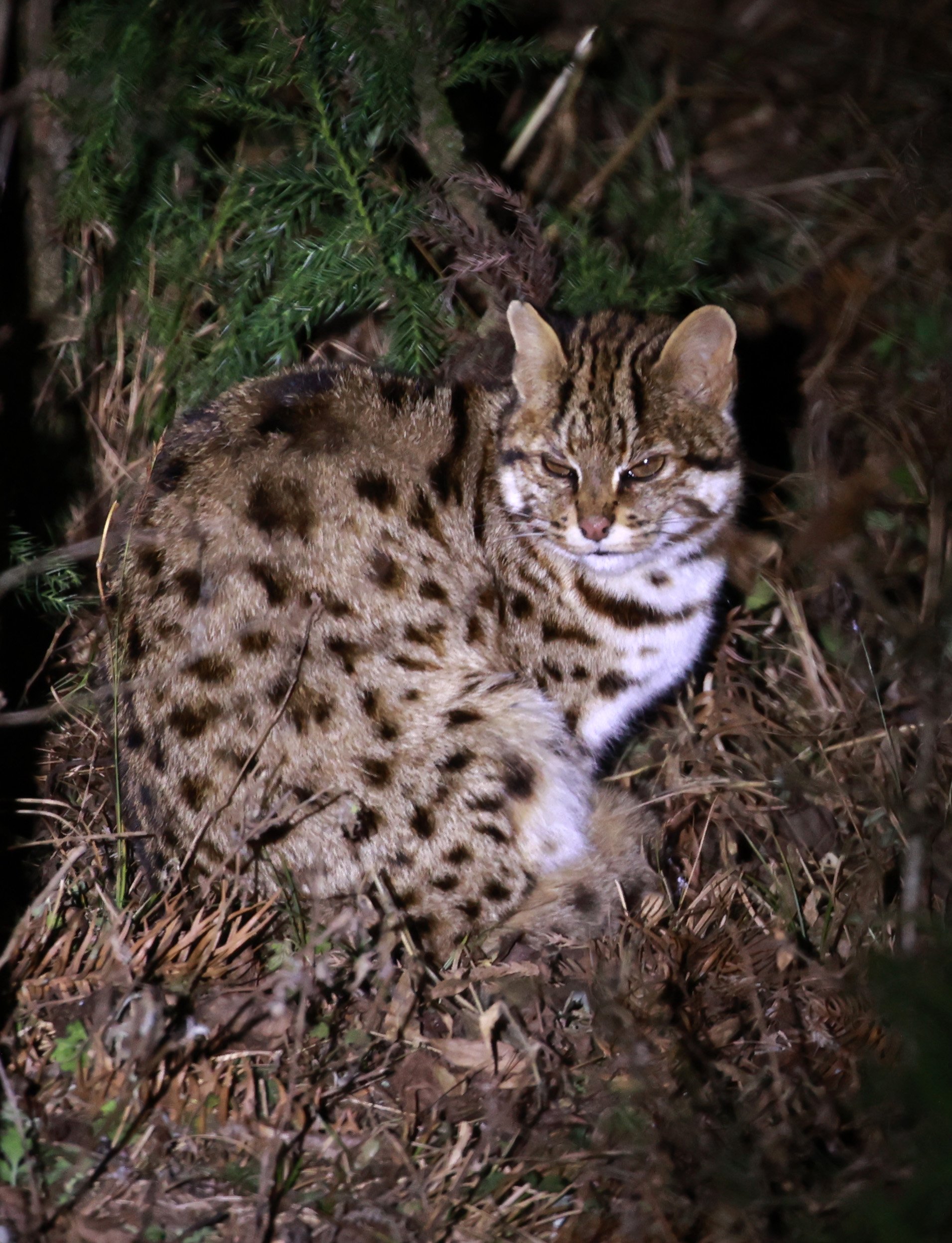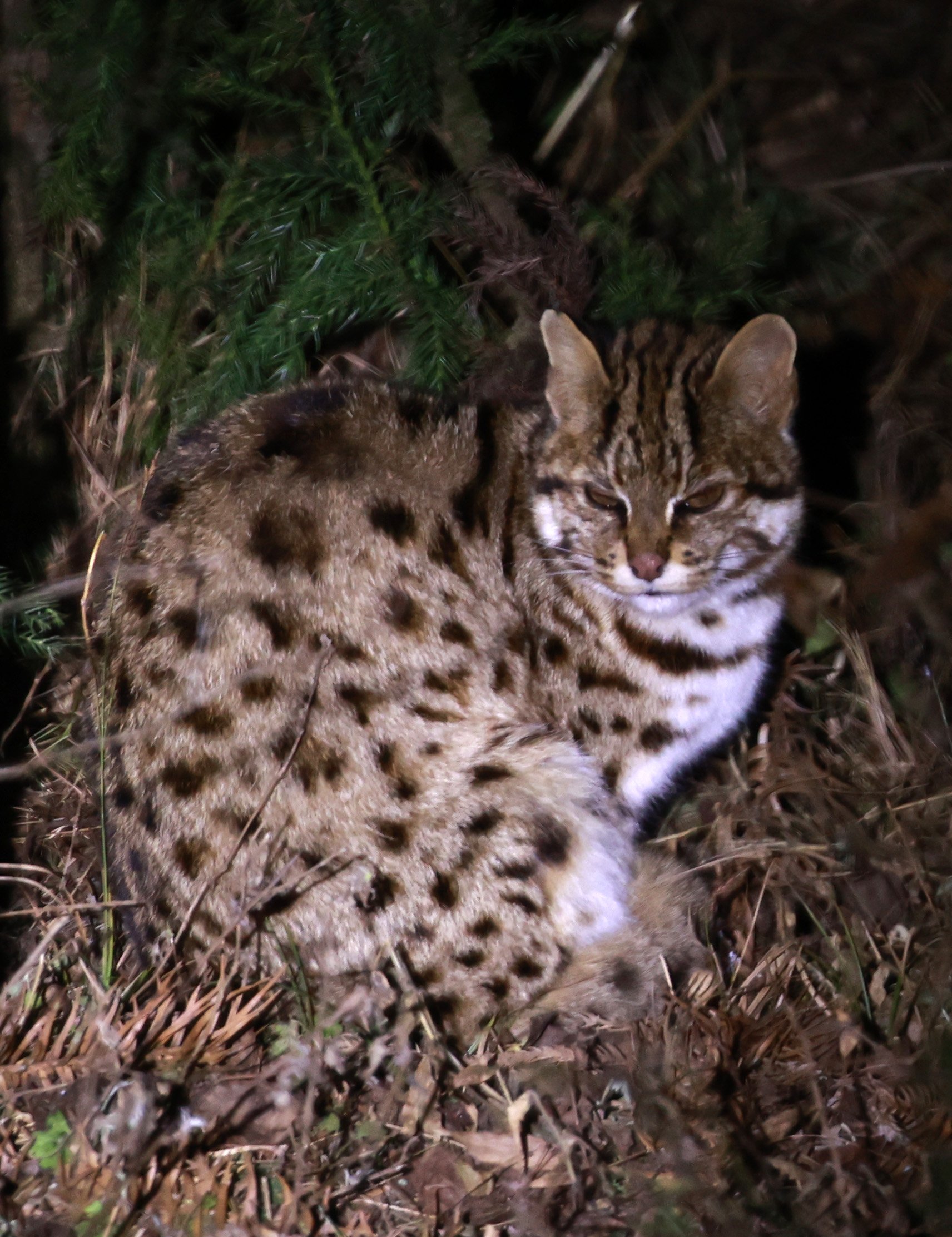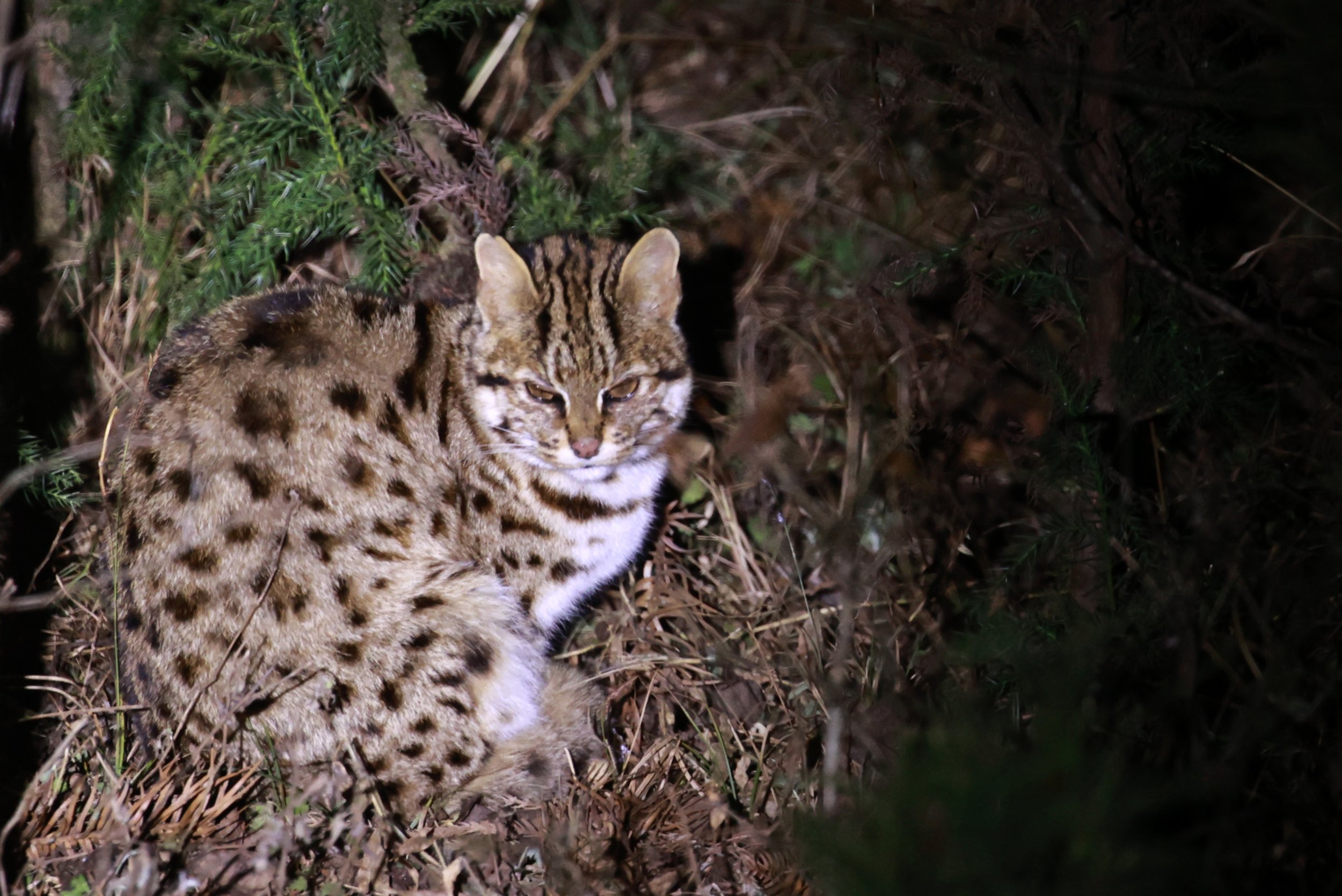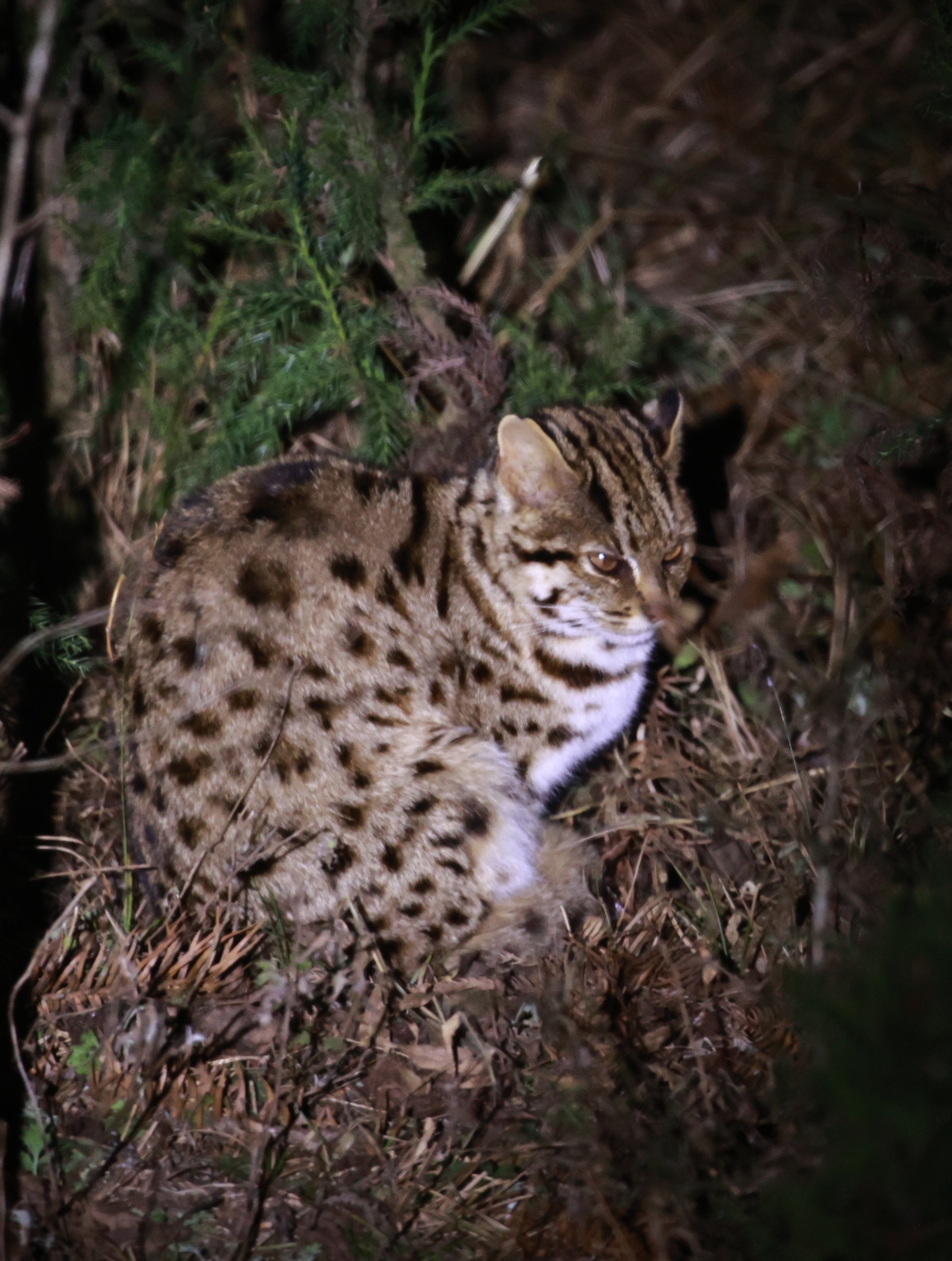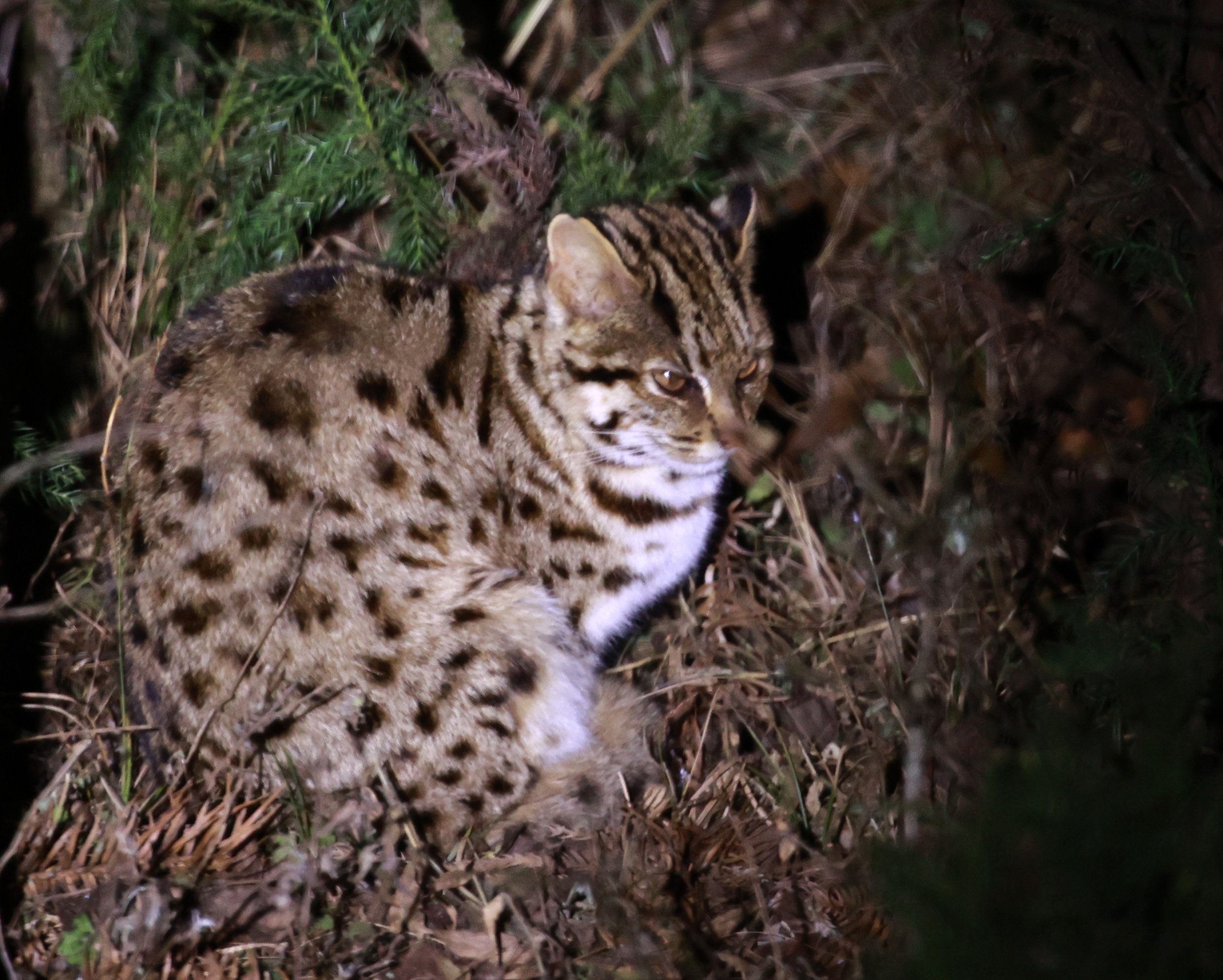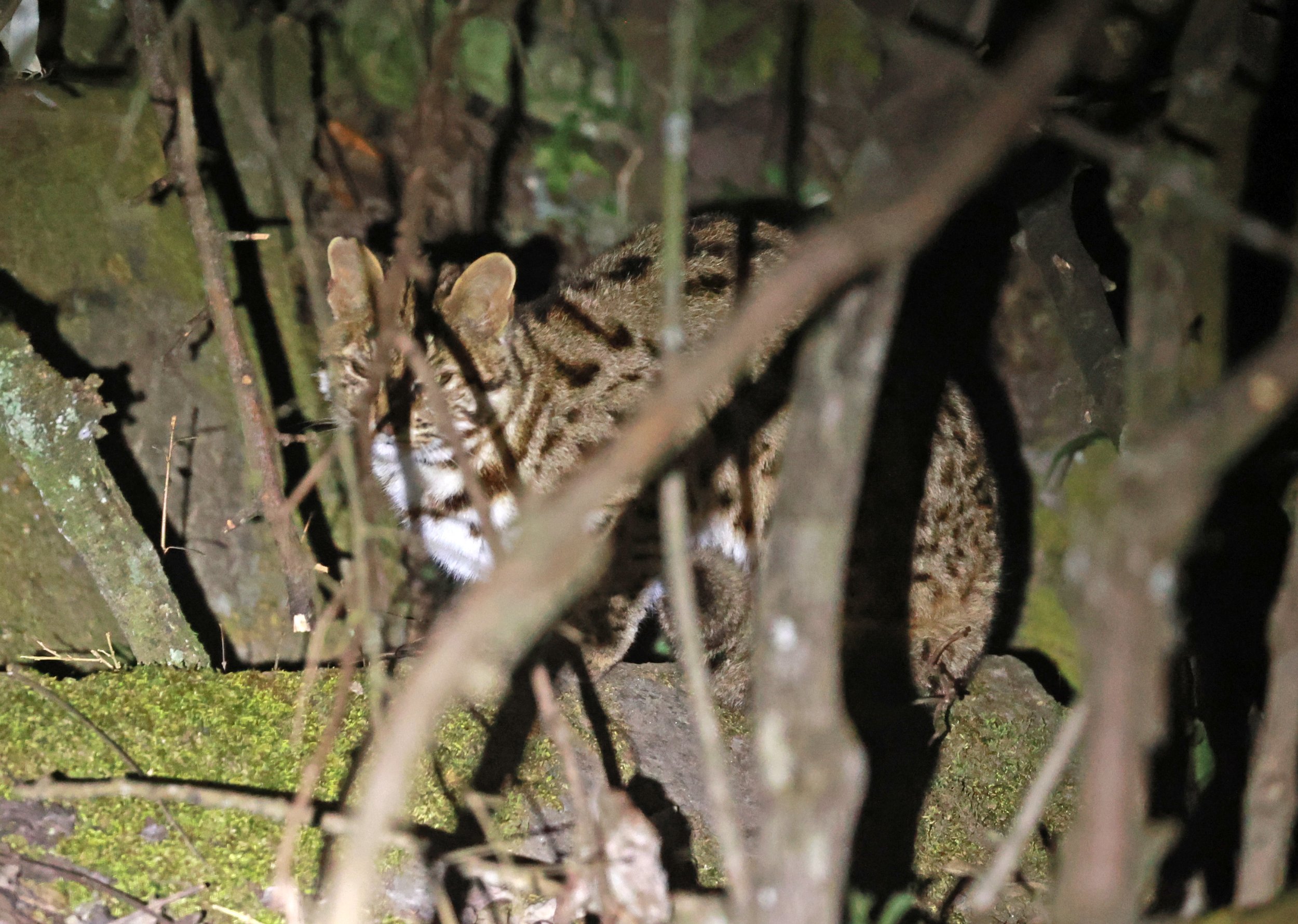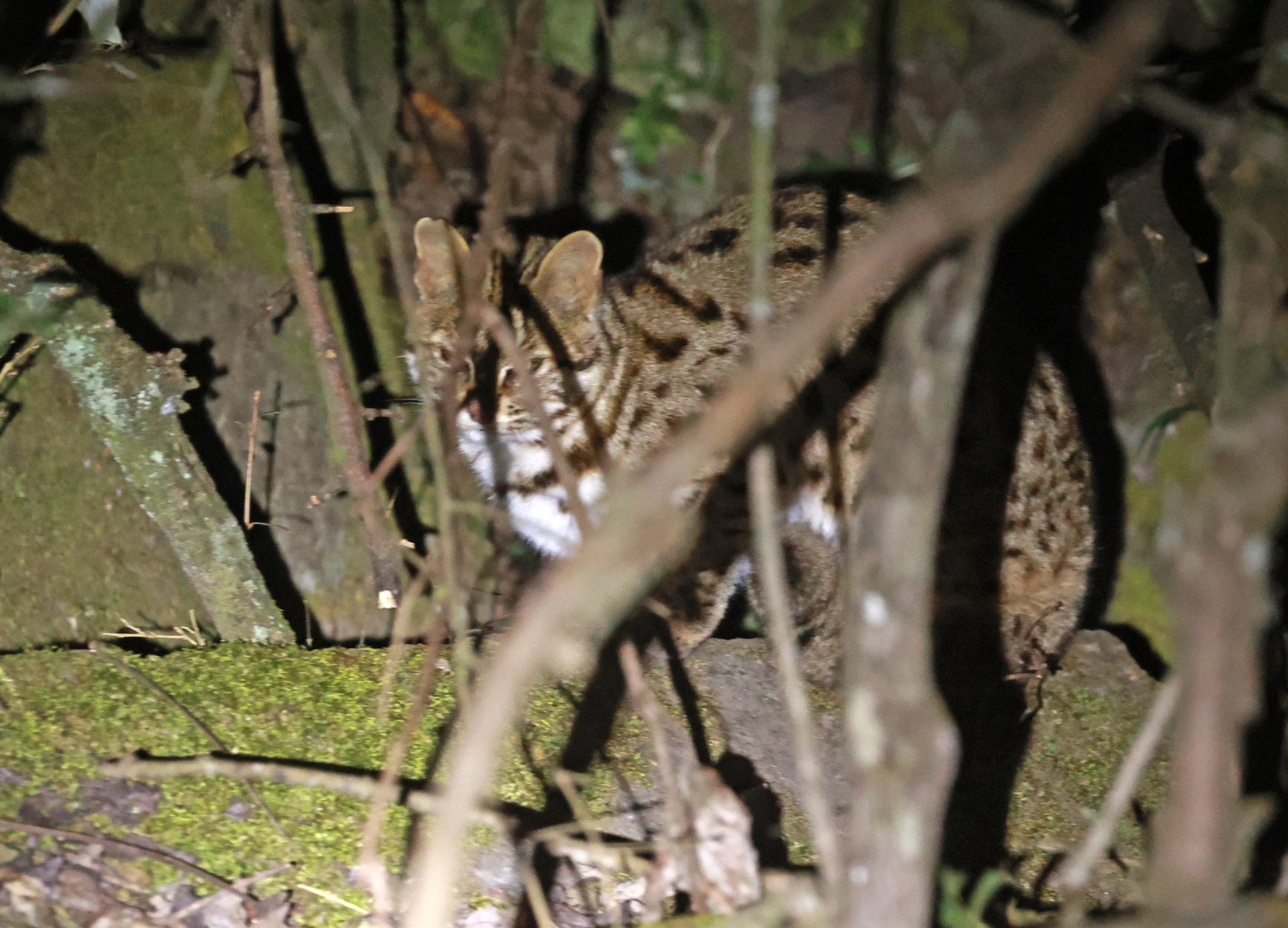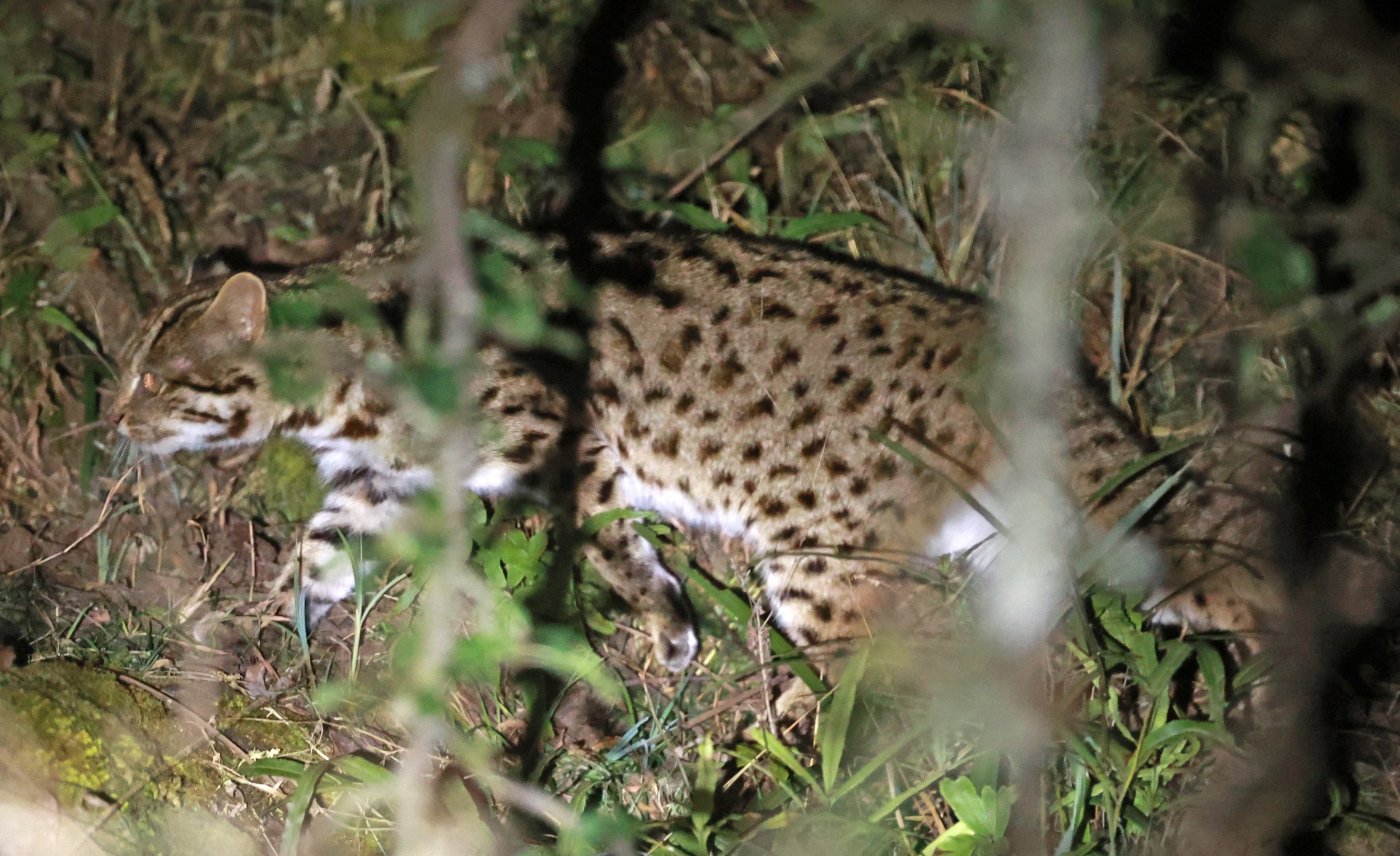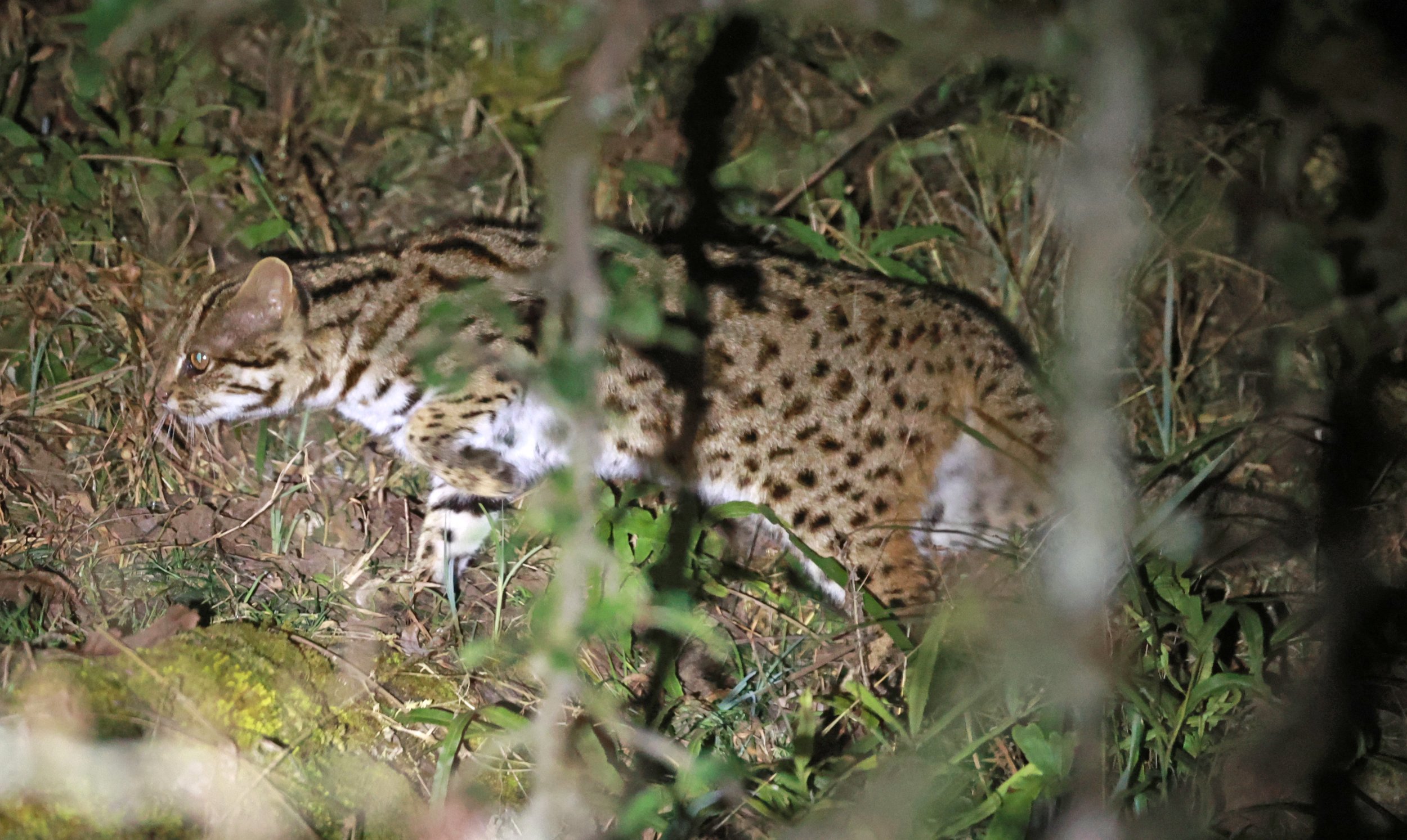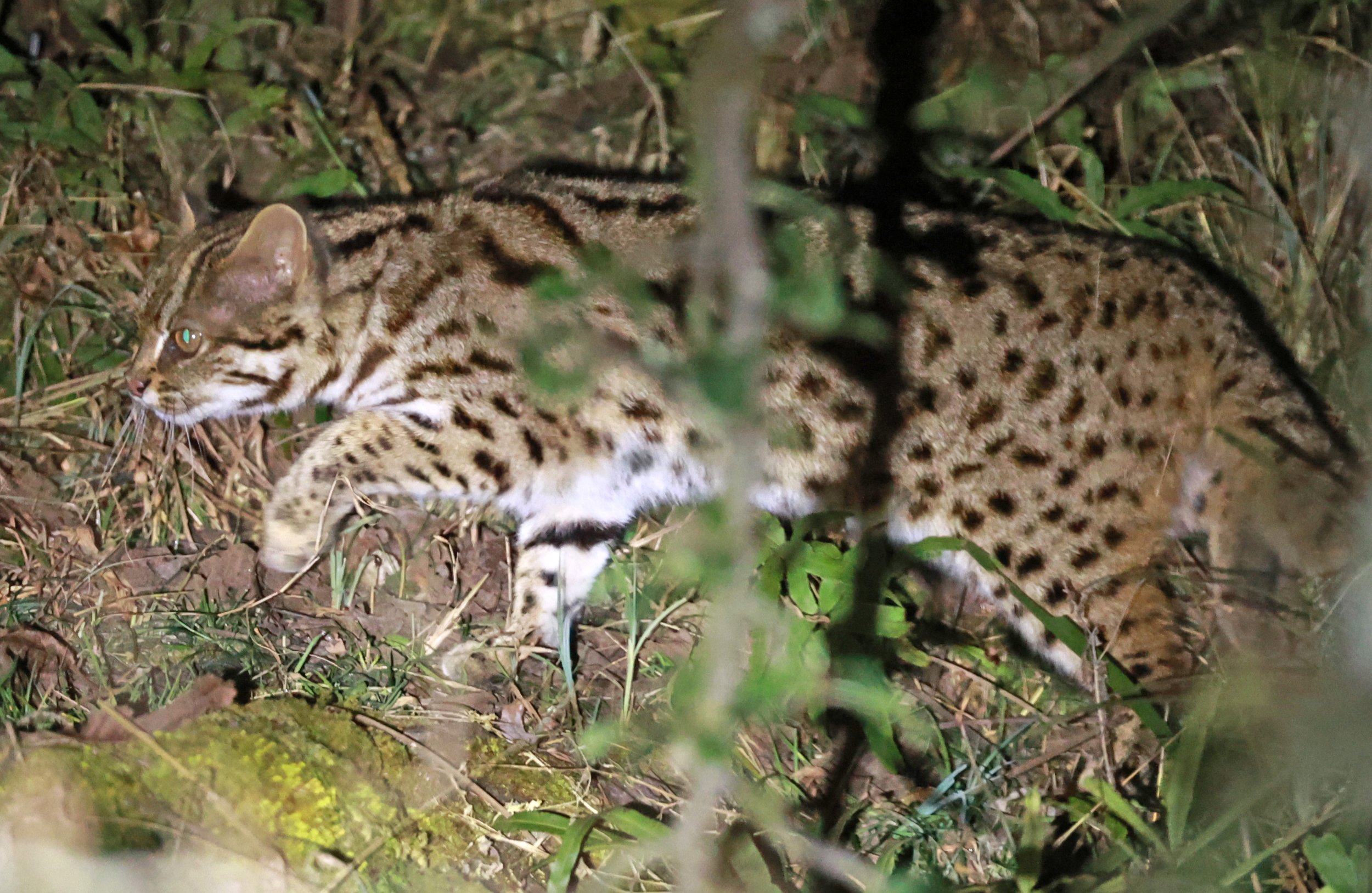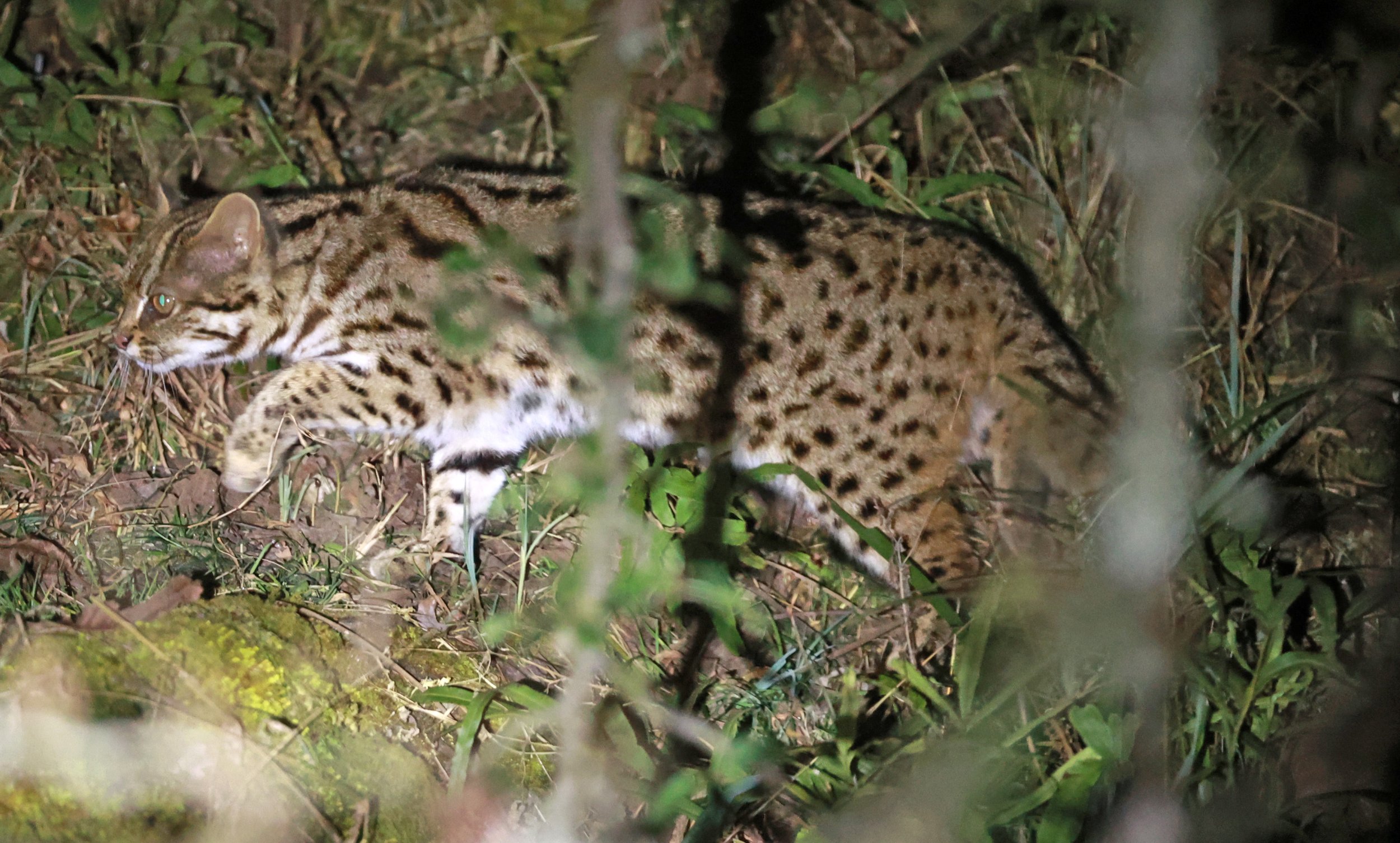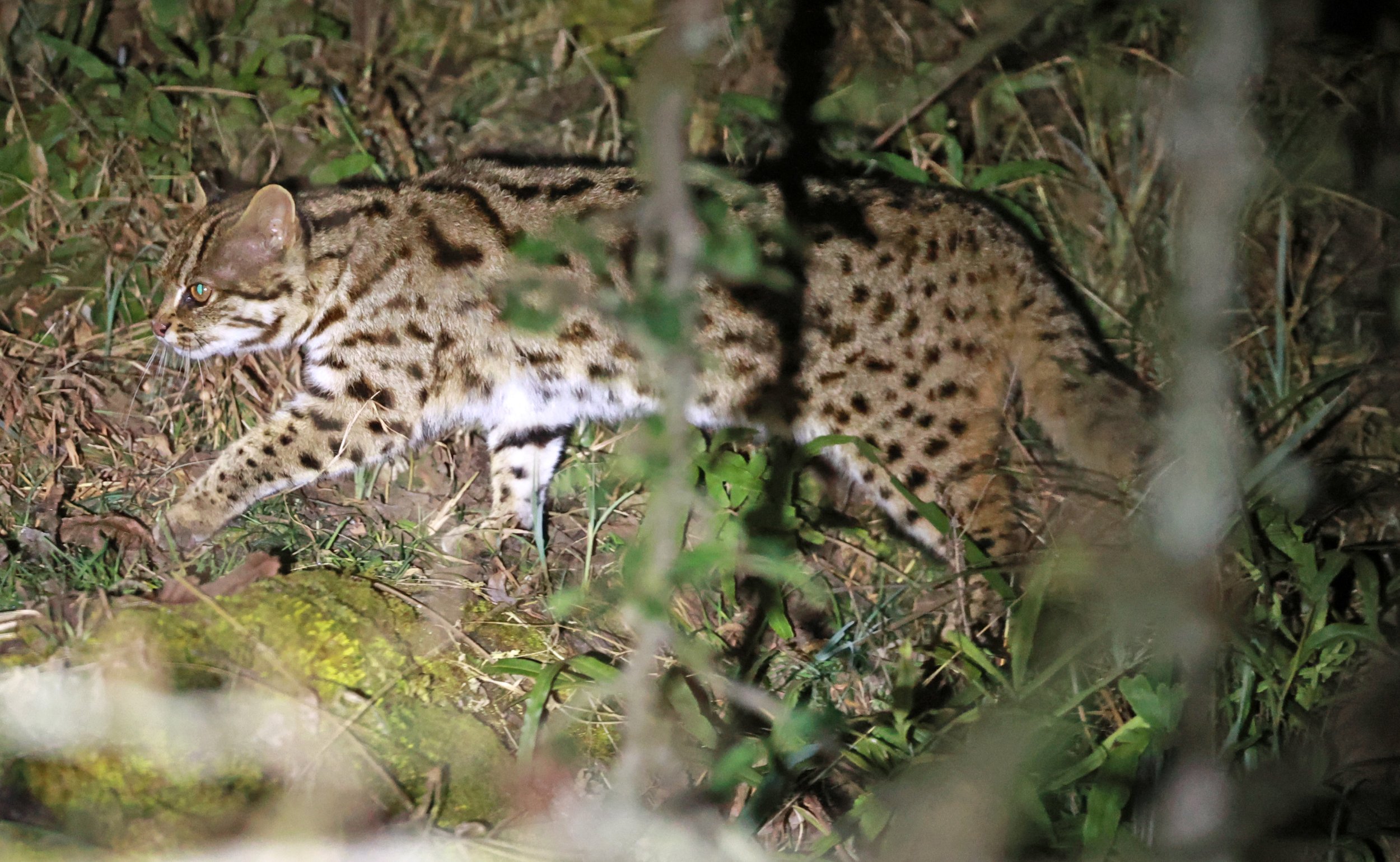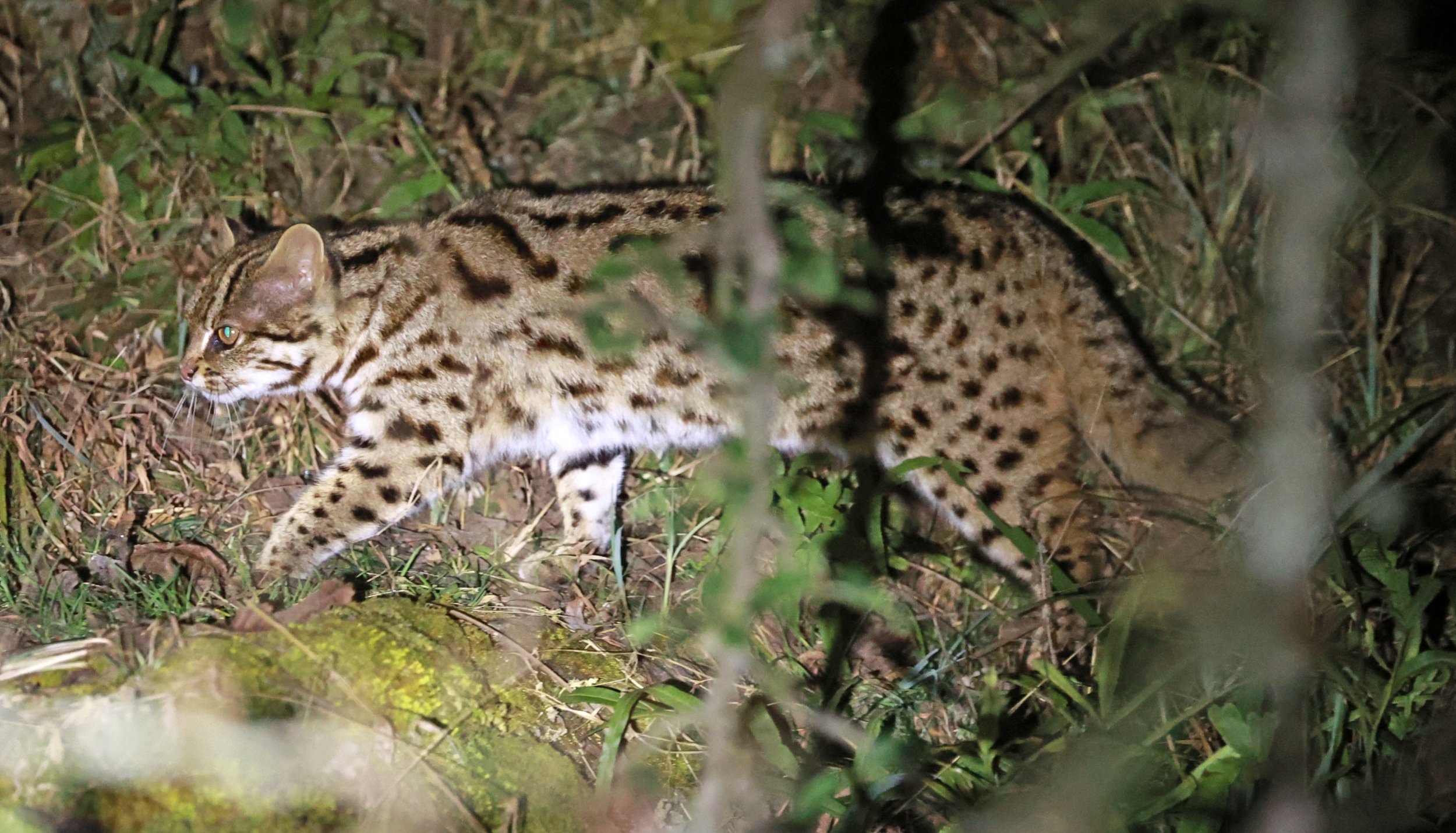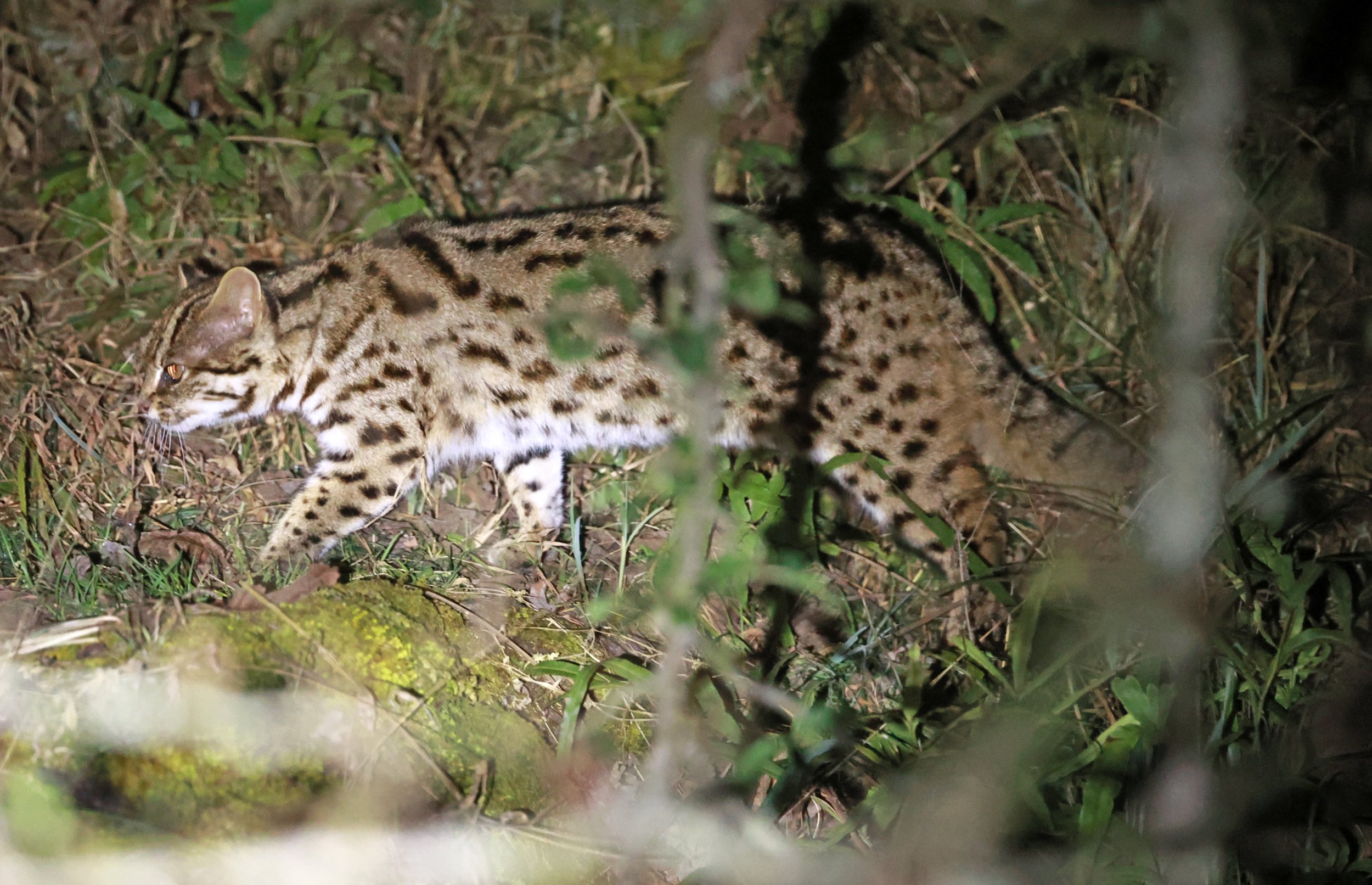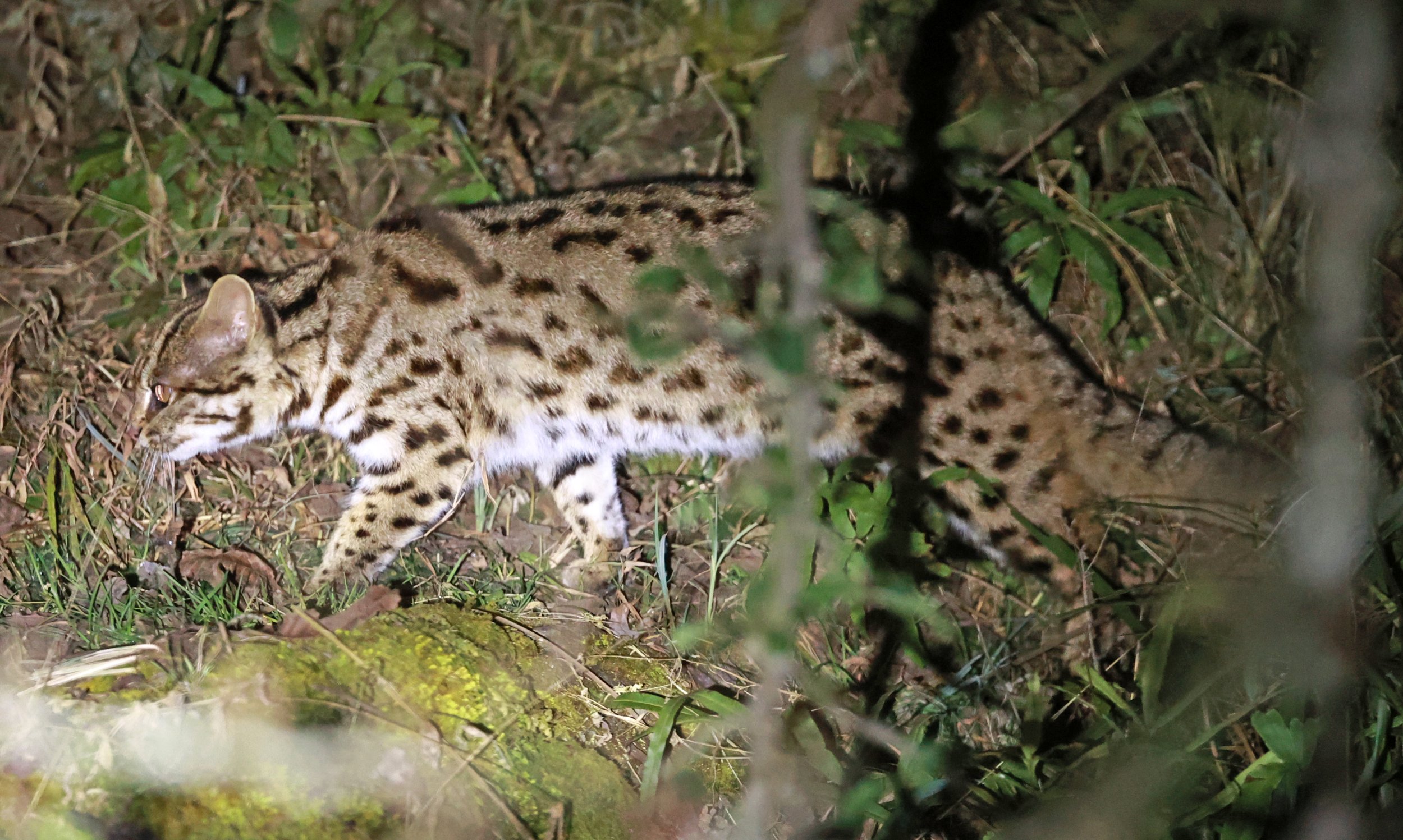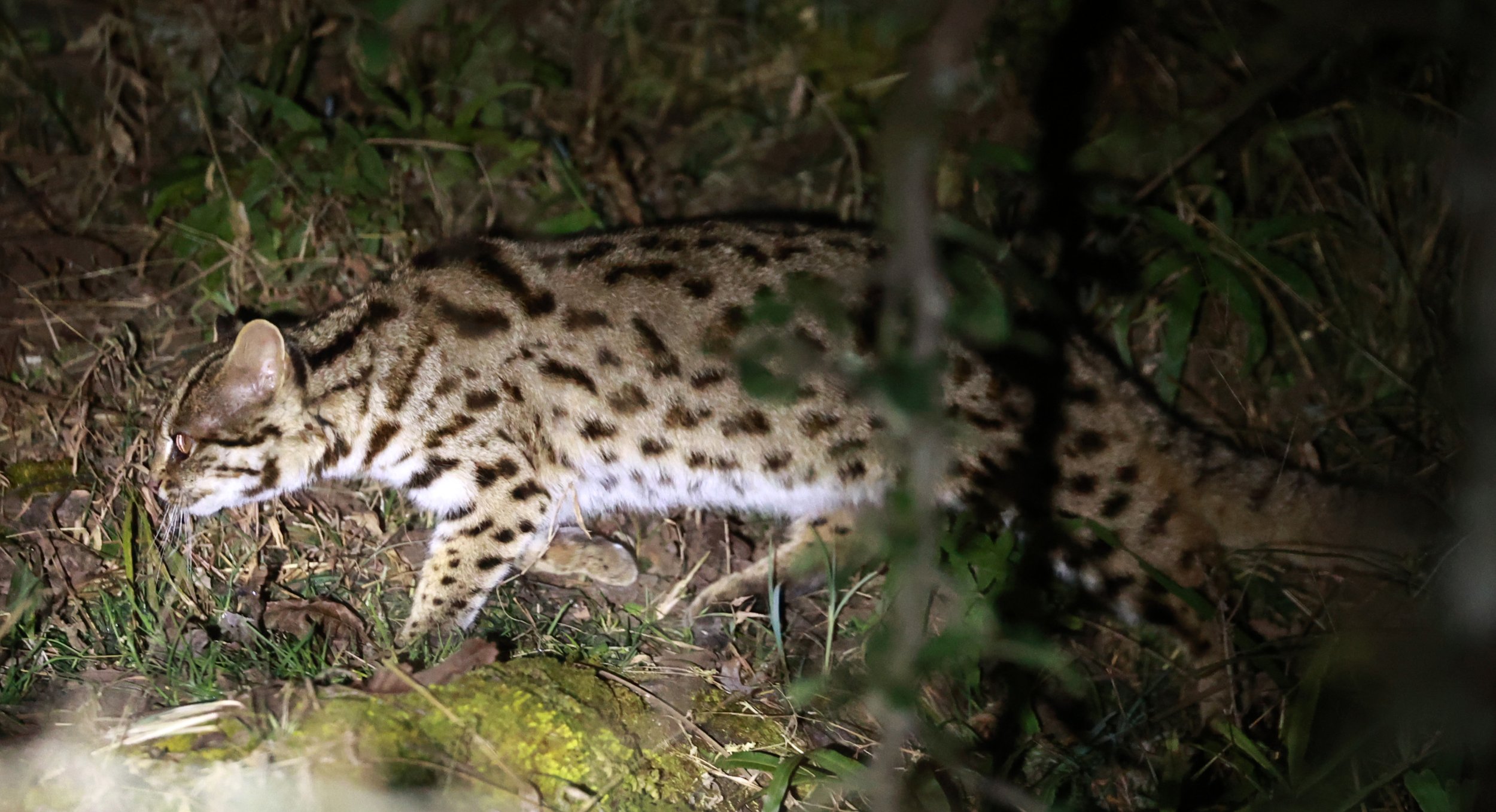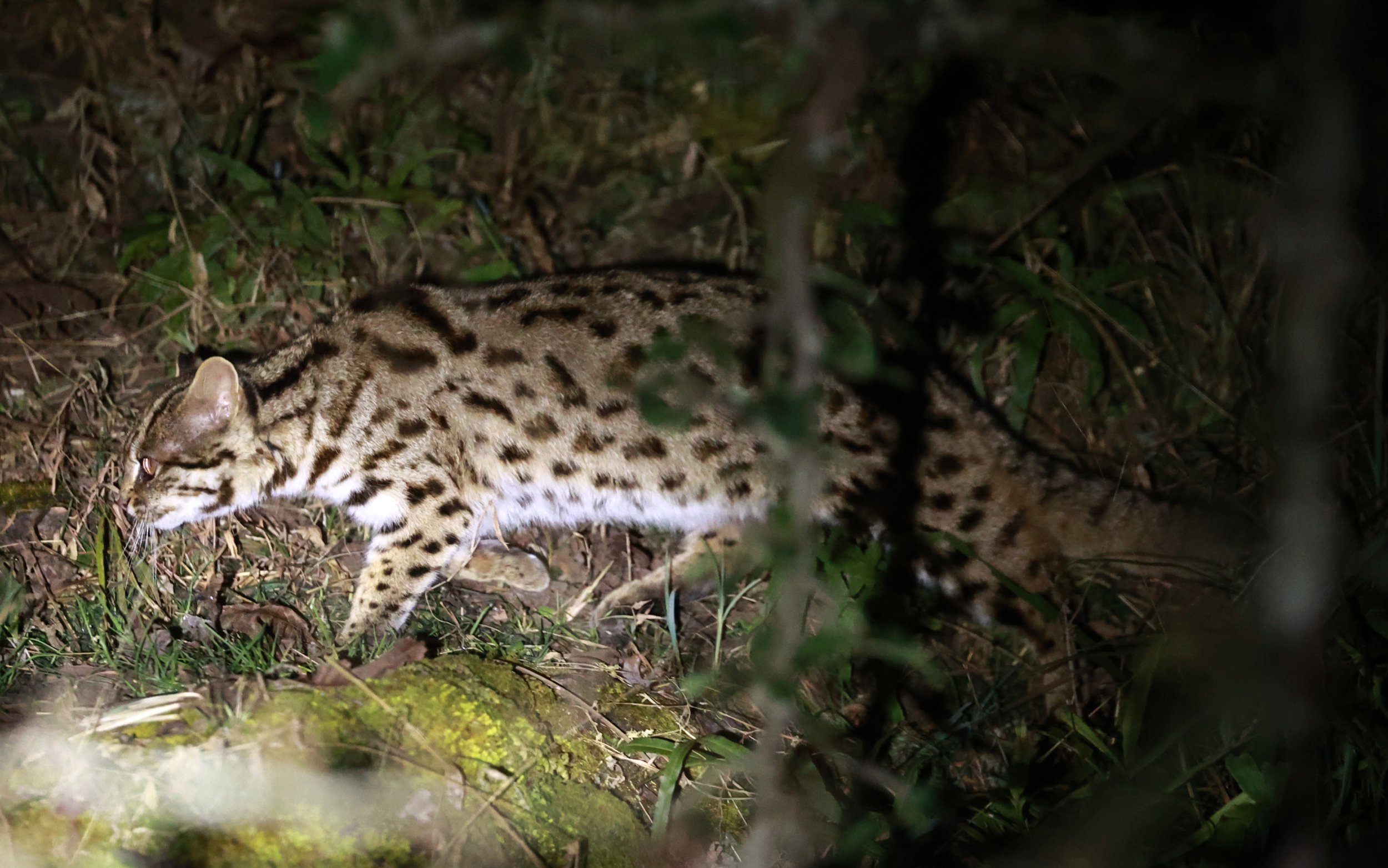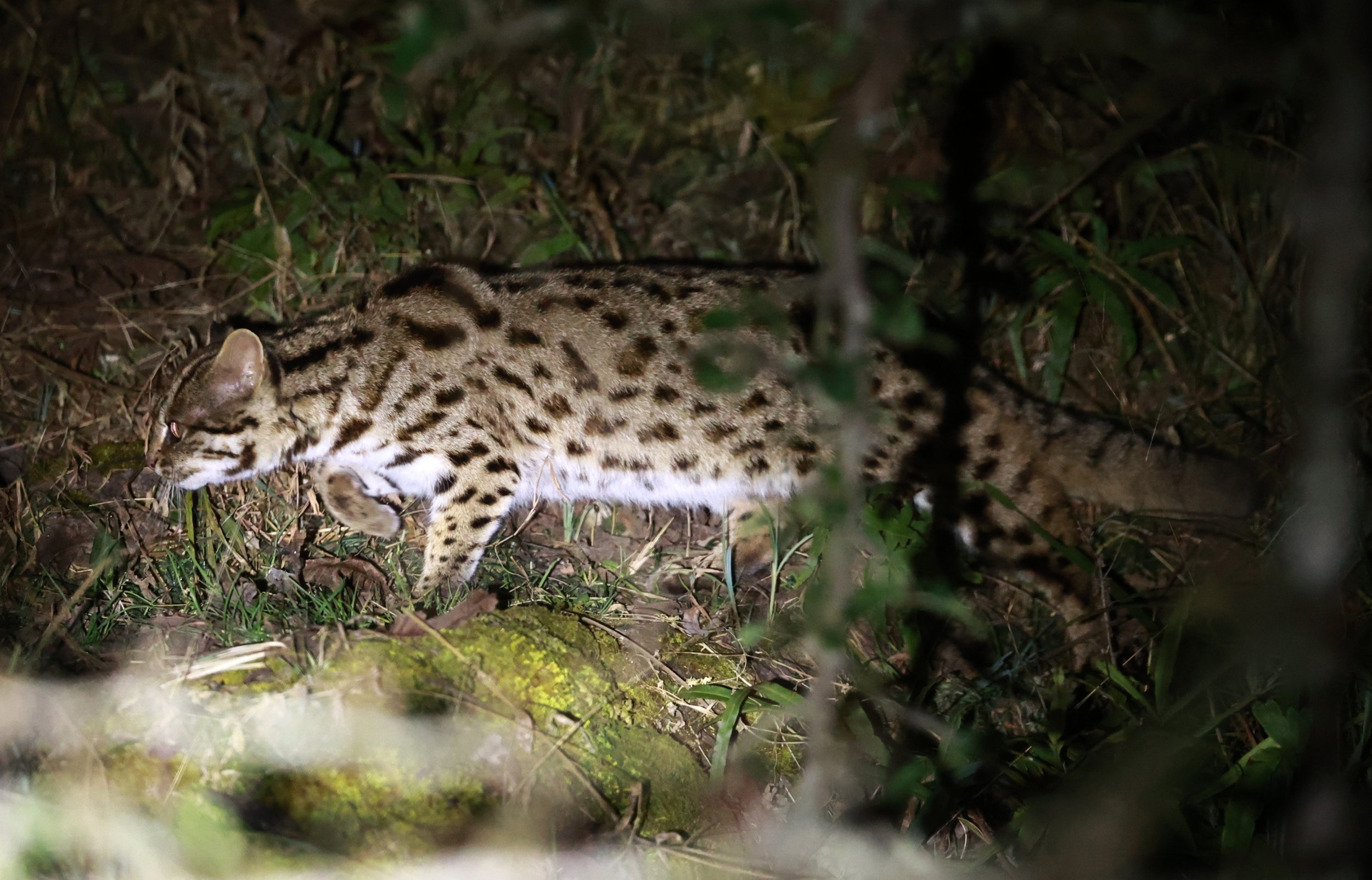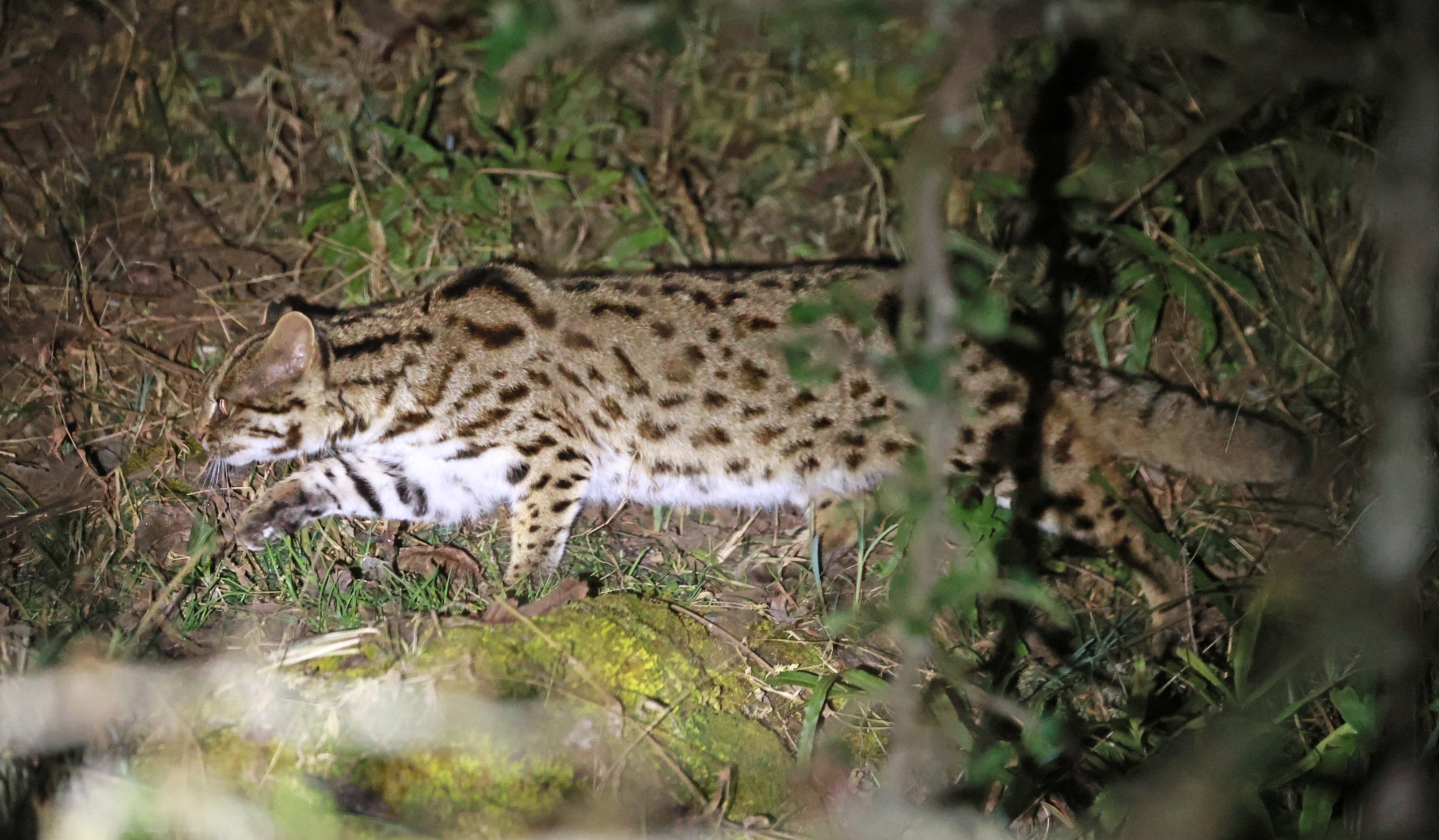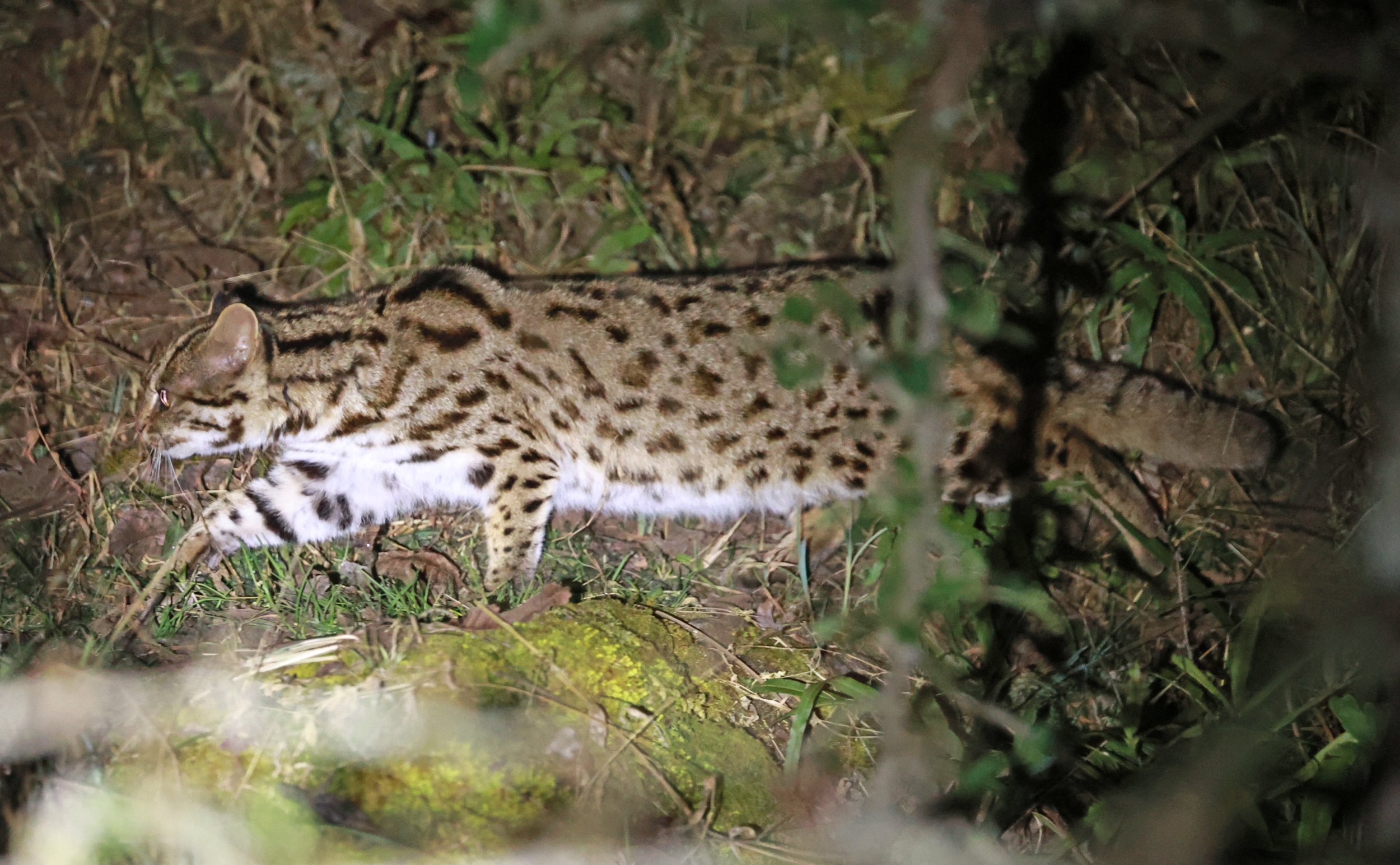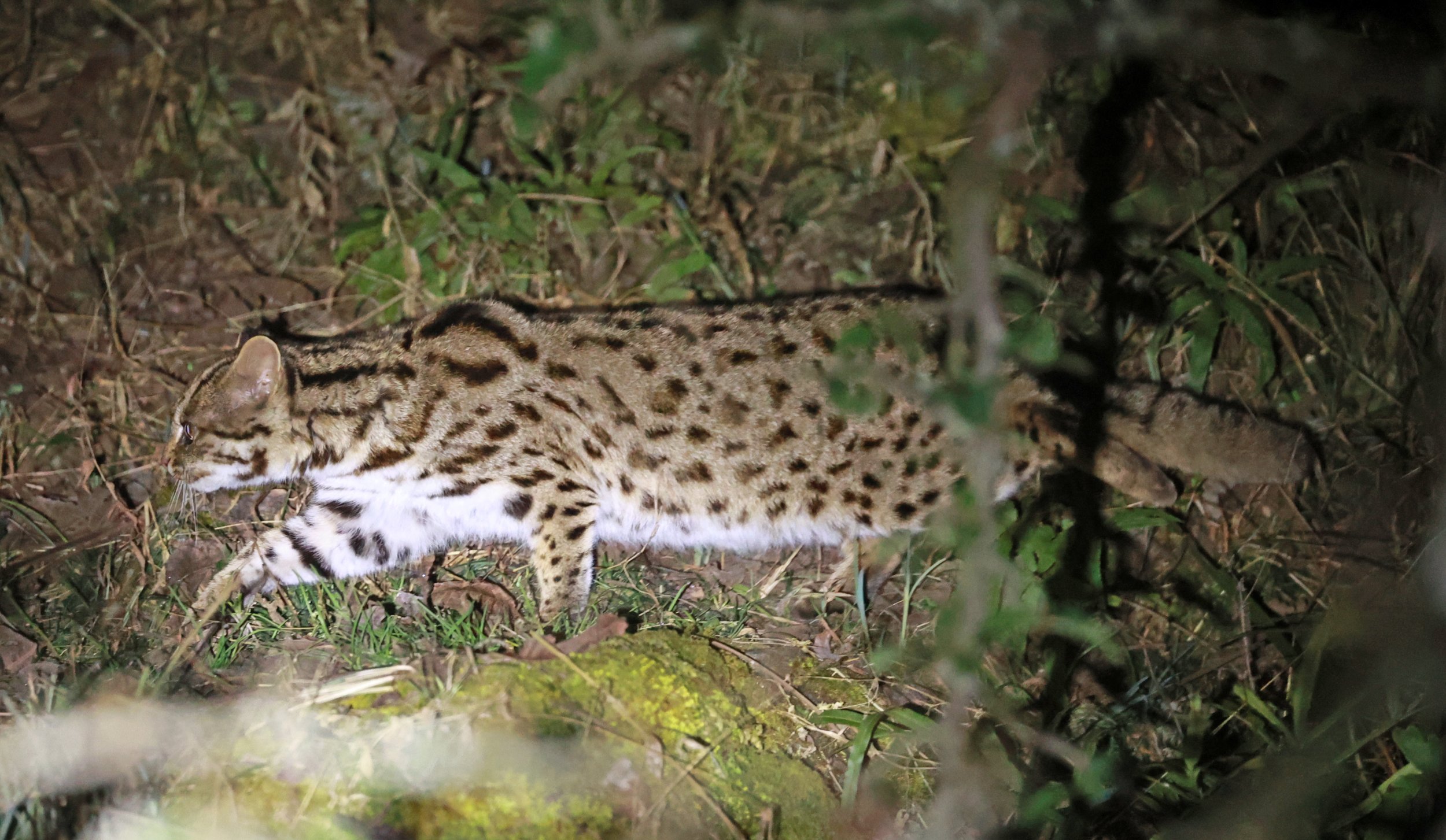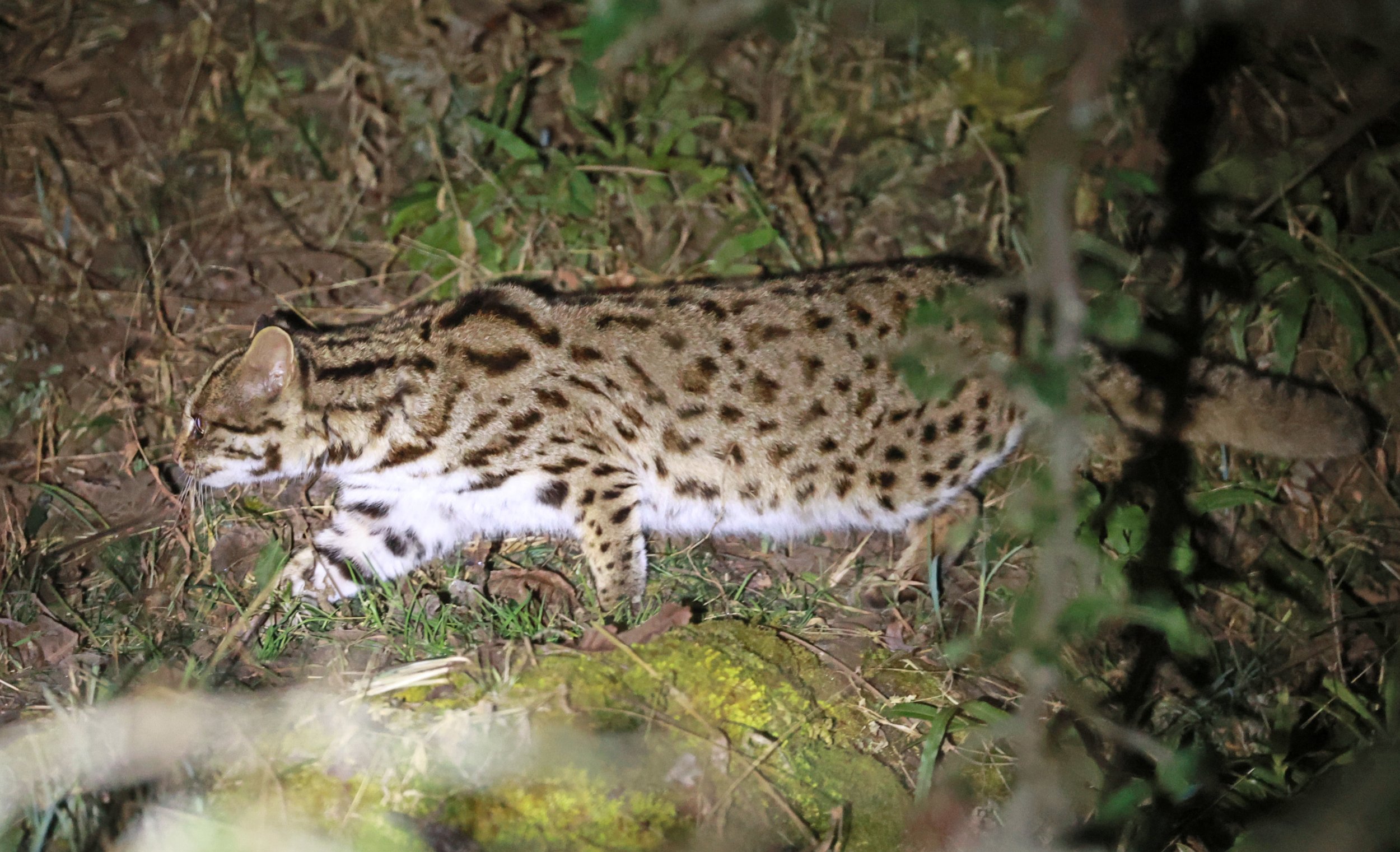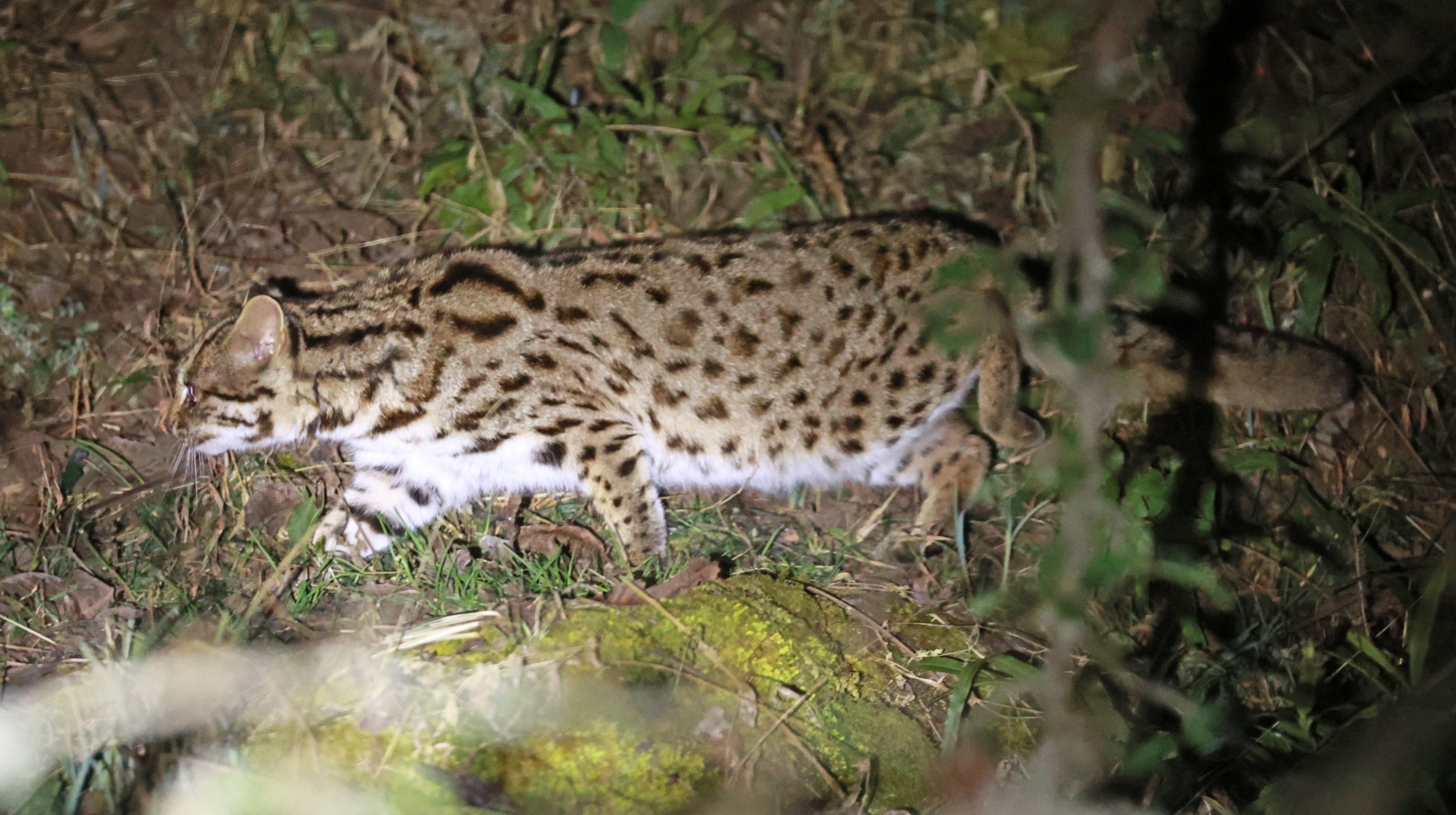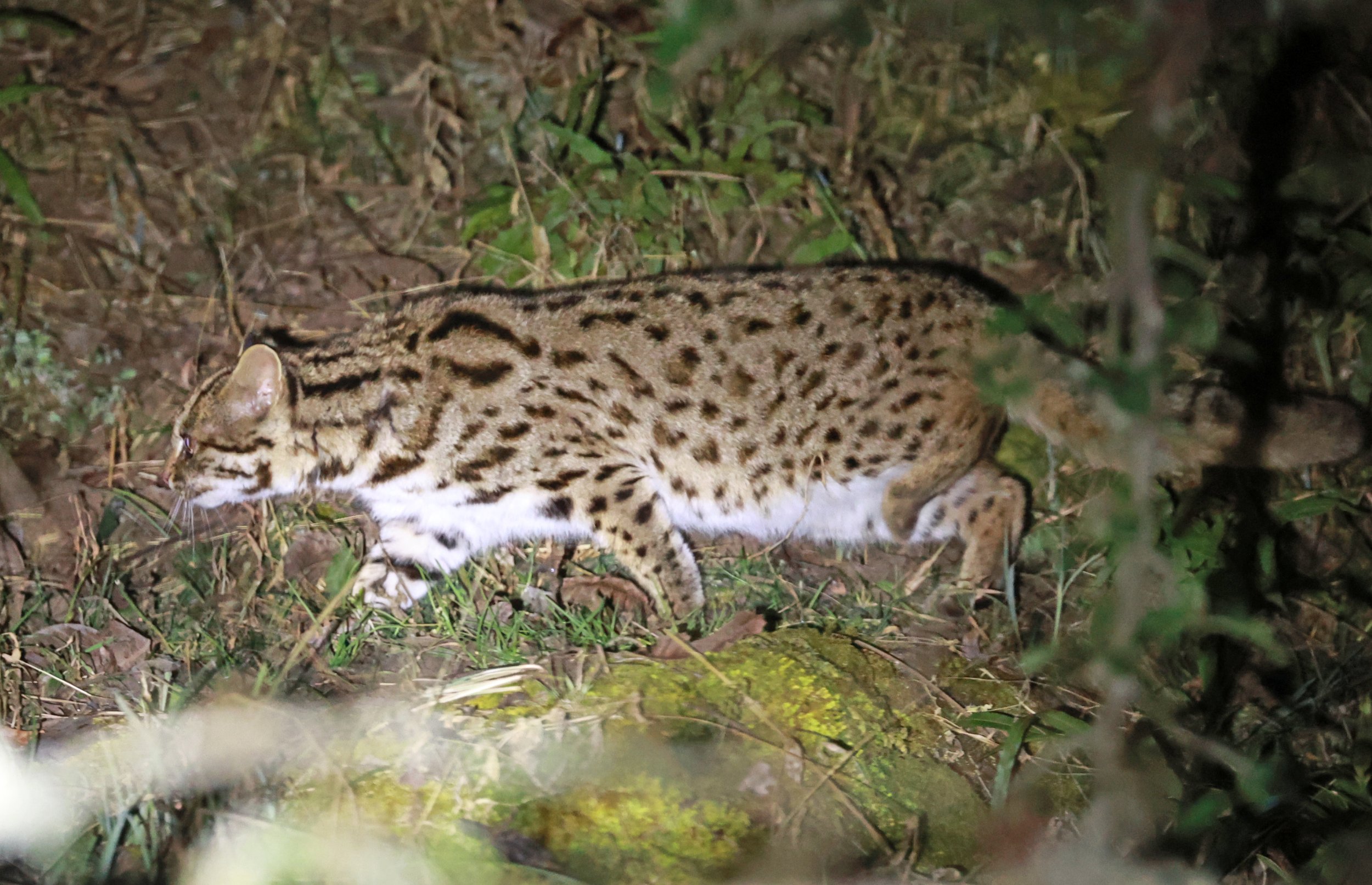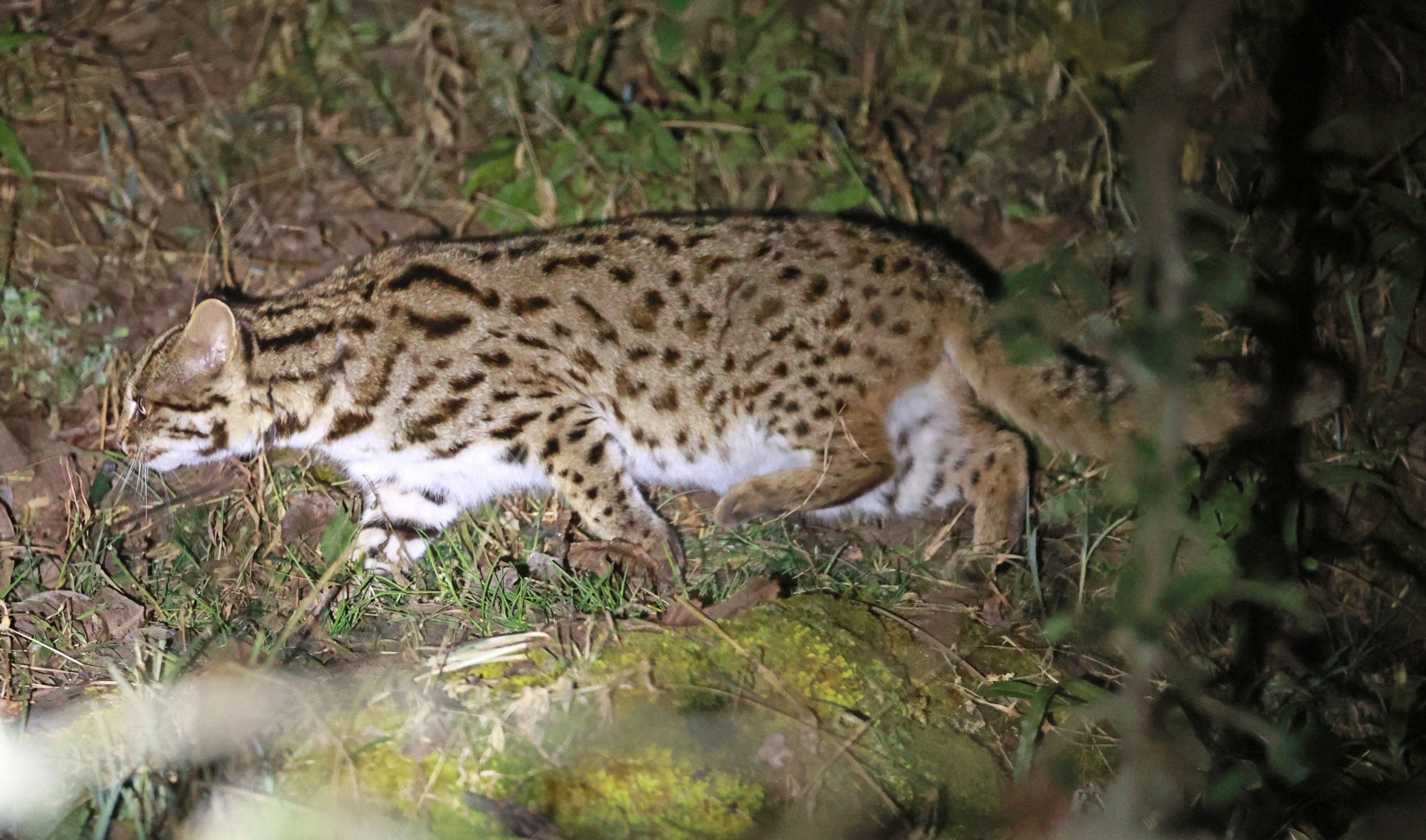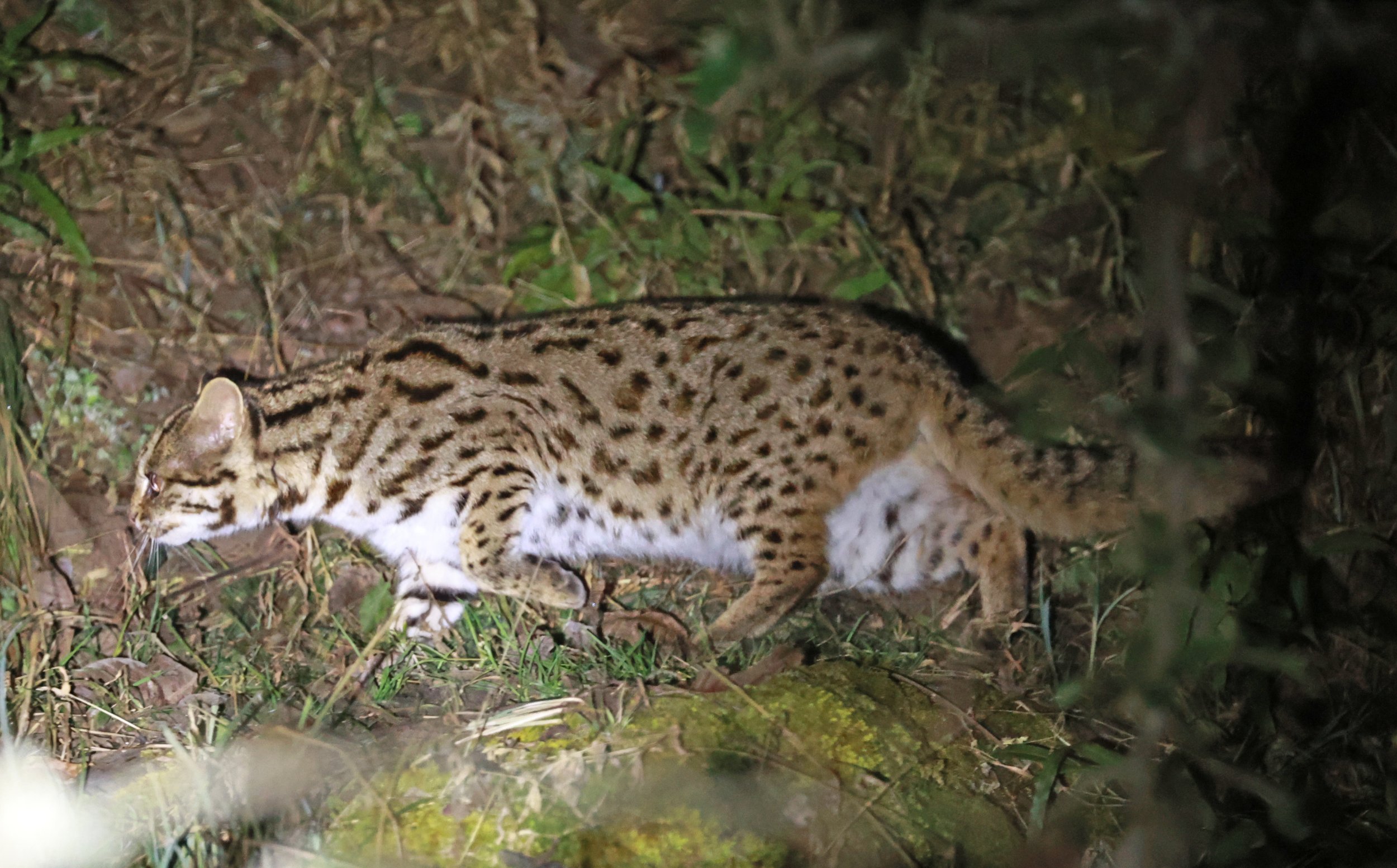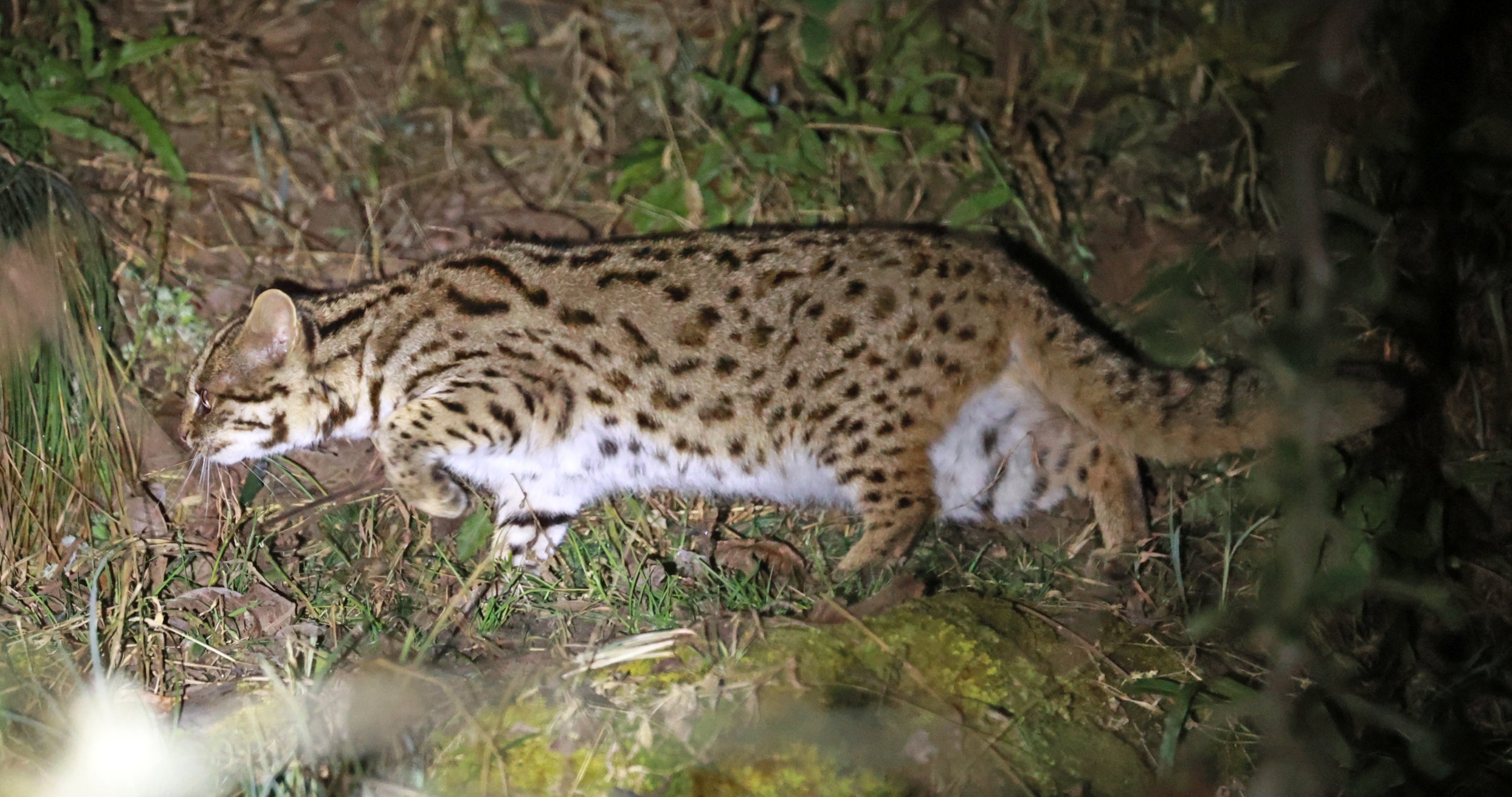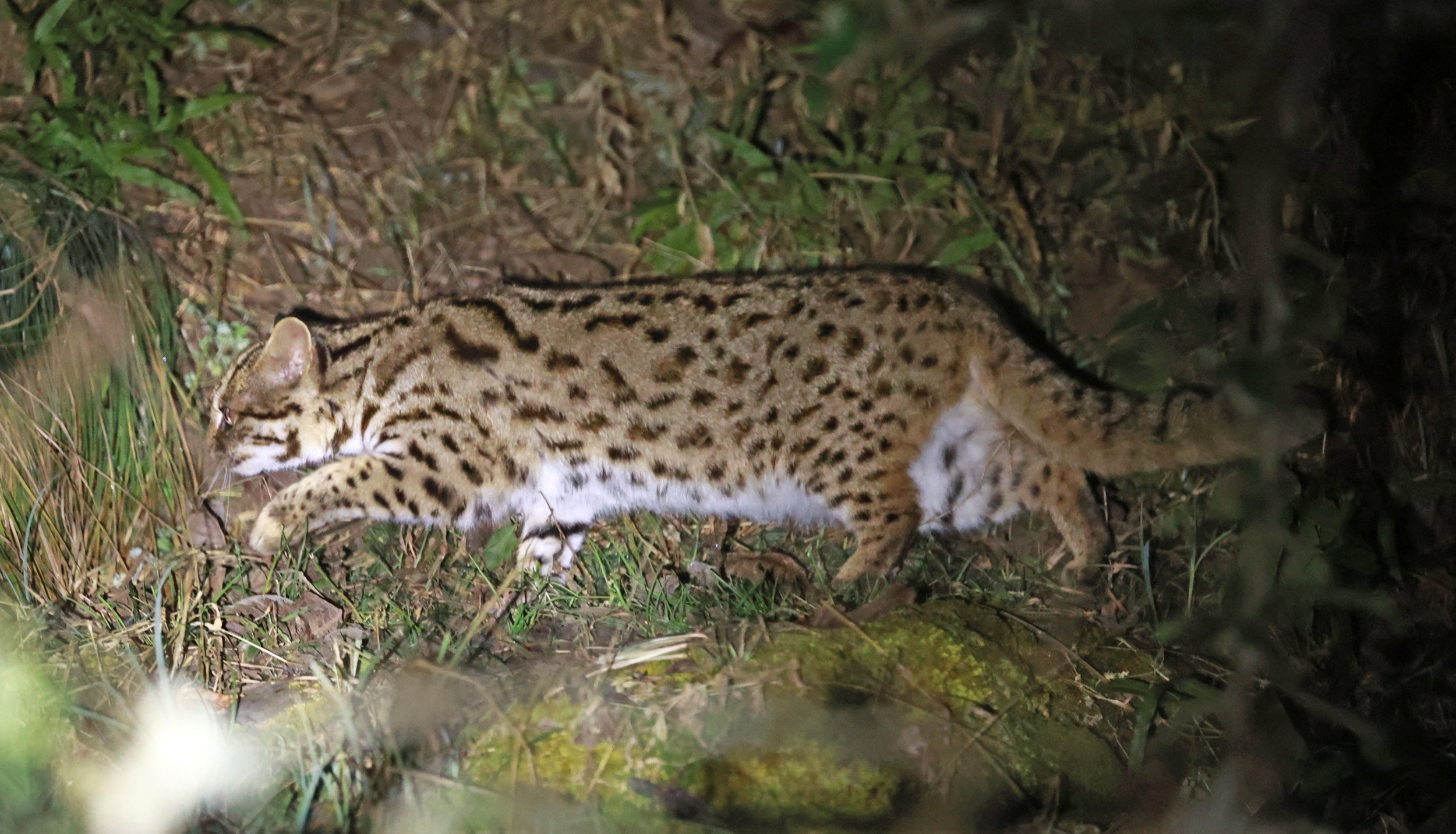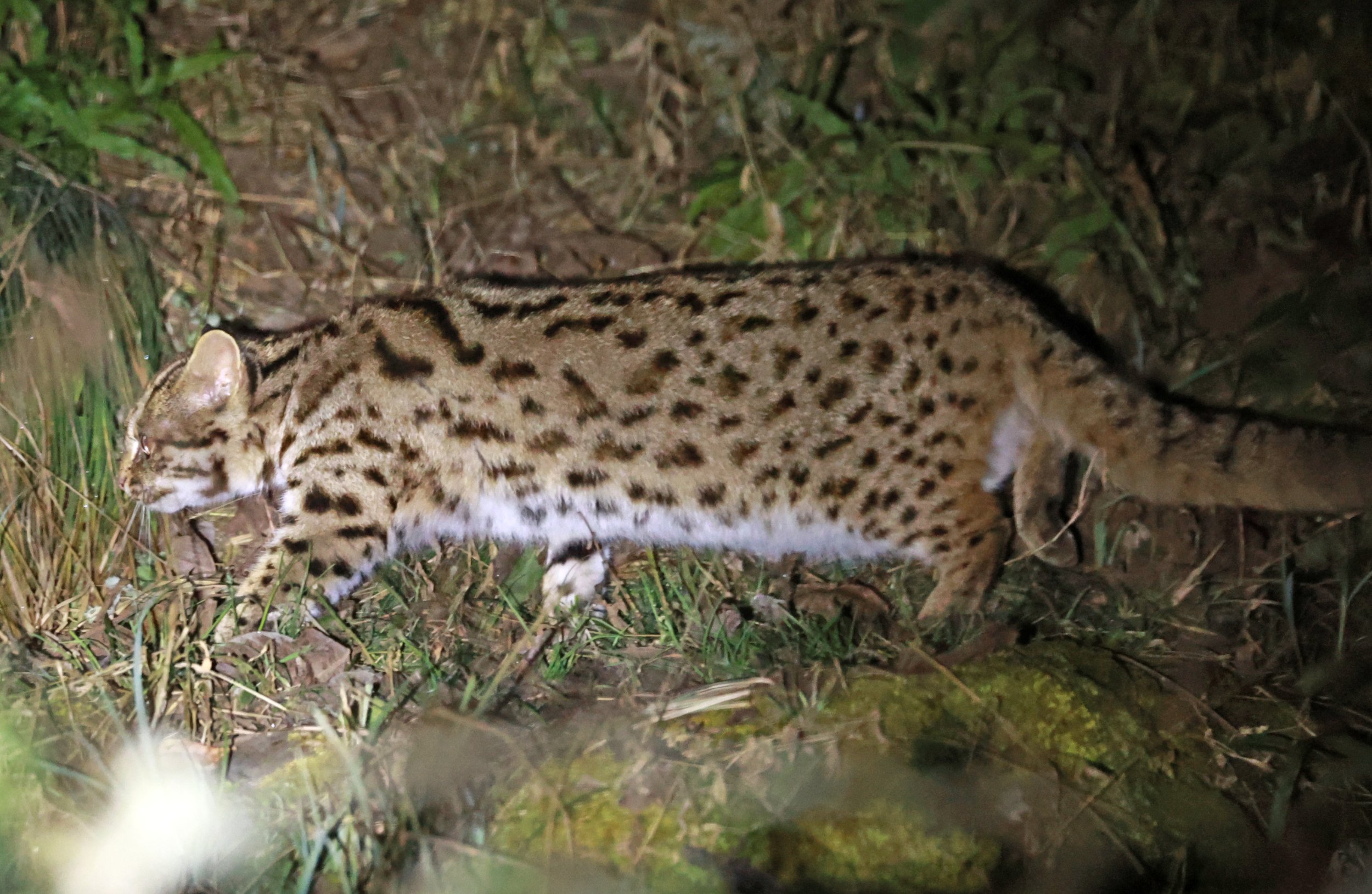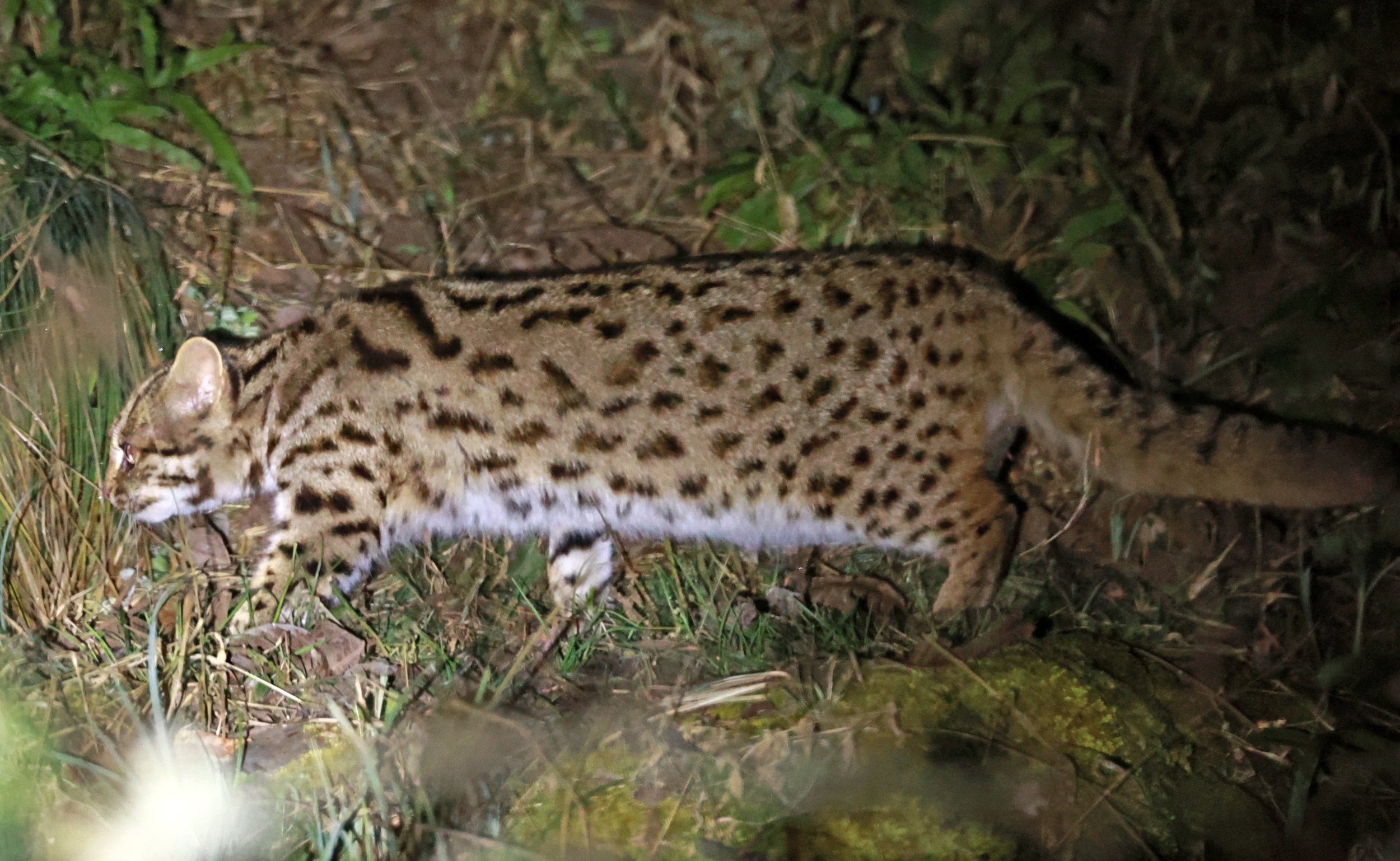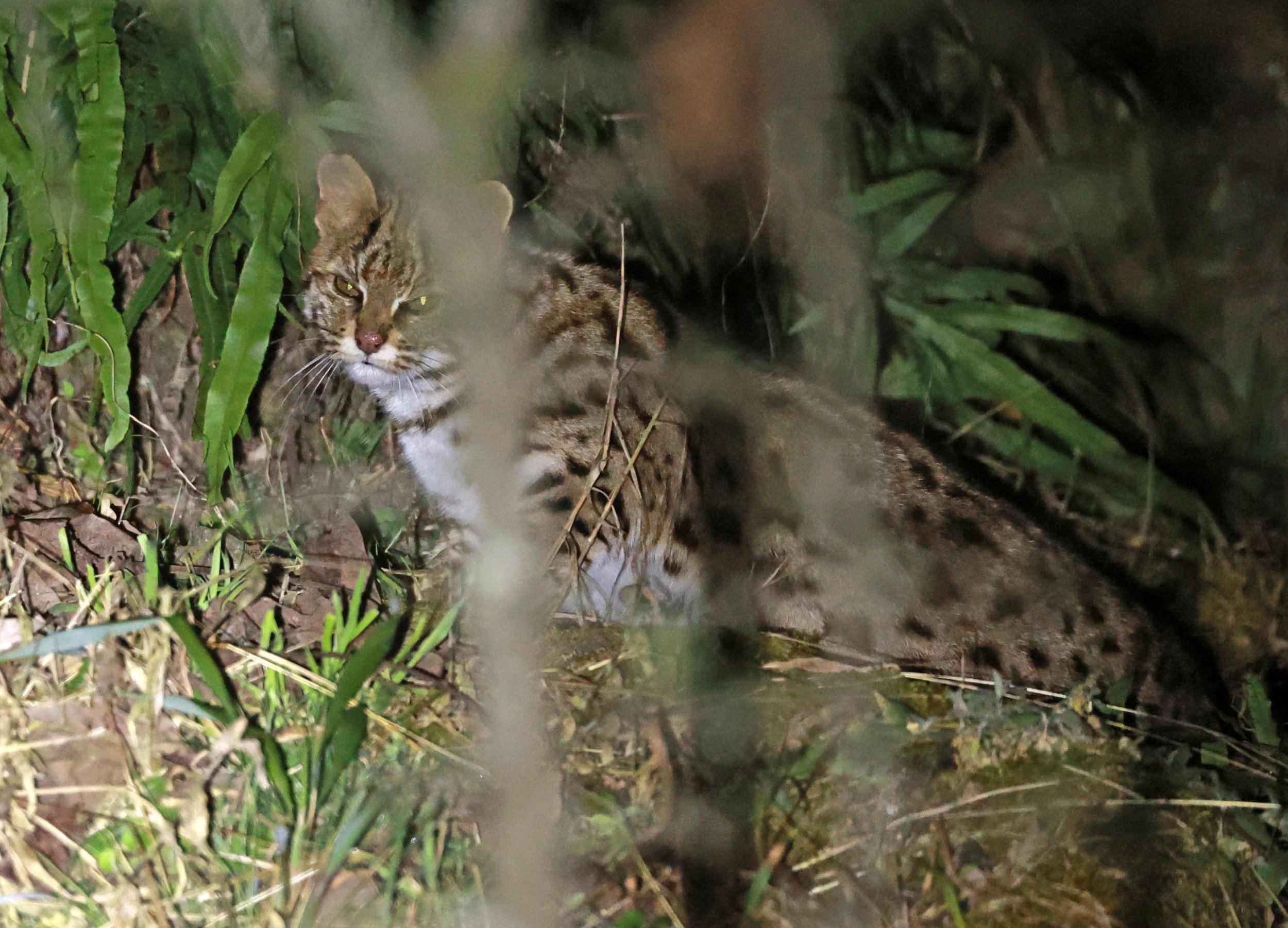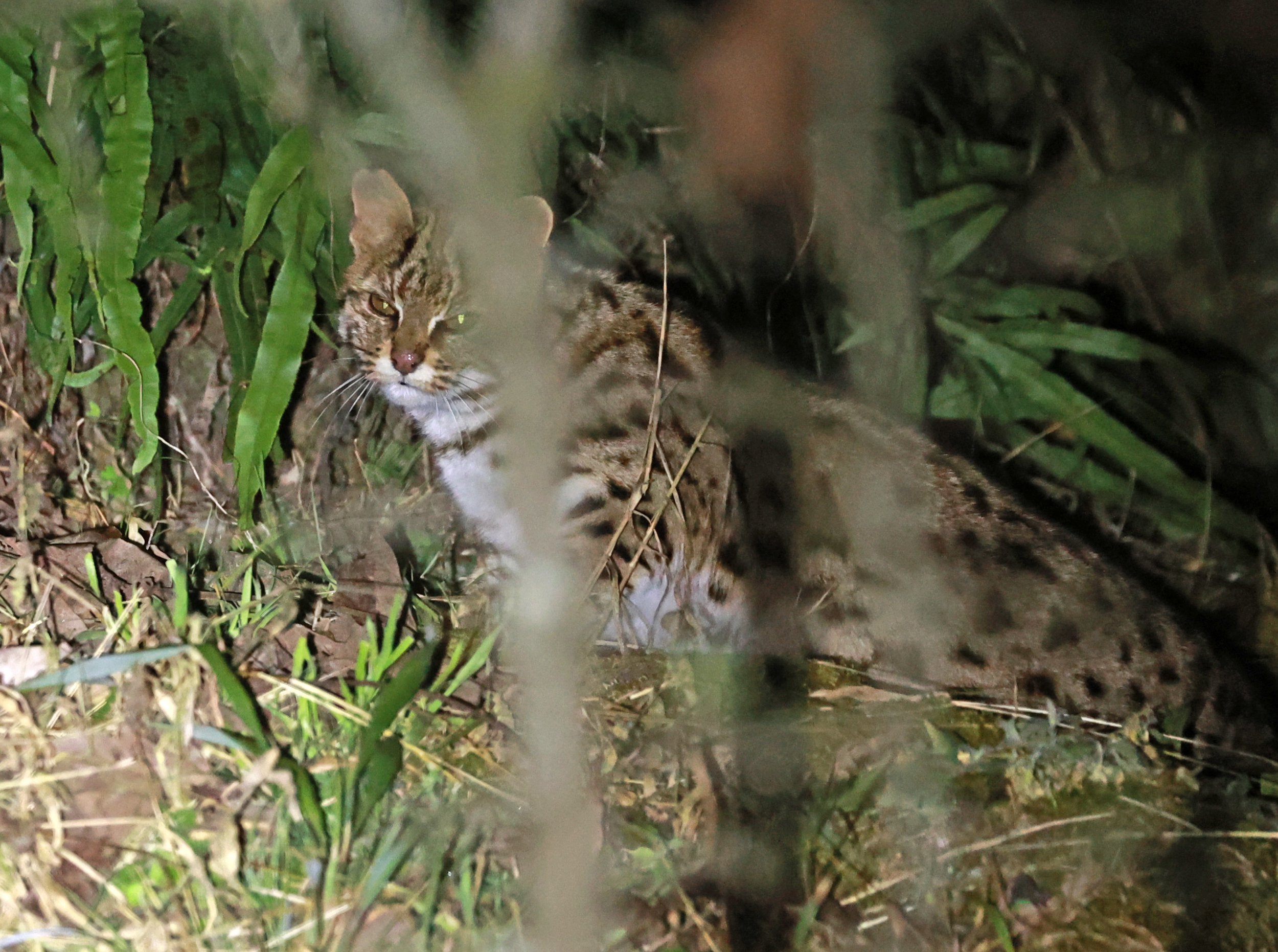Leopard Cat (Prionailurus bengalensis)
The Leopard Cat (Prionailurus bengalensis) is a small wild cat native to continental South, Southeast, and East Asia. Since 2002 it has been listed as Least Concern on the IUCN Red List as it is widely distributed although threatened by habitat loss and hunting in parts of its range.
Historically, the leopard cat of continental Asia was considered the same species as the Sunda leopard cat. As of 2017, the latter is recognised as a distinct species, with the taxonomic name Prionailurus javanensis.
A leopard cat is about the size of a domestic cat, but more slender, with longer legs and well-defined webs between its toes. Its small head is marked with two prominent dark stripes and a short and narrow white muzzle. There are two dark stripes running from the eyes to the ears and smaller white streaks running from the eyes to the nose. The backs of its moderately long and rounded ears are black with central white spots. Body and limbs are marked with black spots of varying size and colour, and along its back are two to four rows of elongated spots. The tail is about half the size of its head-body length and is spotted with a few indistinct rings near the black tip. The background colour of the spotted fur is tawny, with a white chest and belly. However, in their huge range, they vary so much in colouration and size of spots as well as in body size and weight that initially they were thought to be several different species. The fur colour is yellowish brown in the southern populations, but pale silver-grey in the northern ones. The black markings may be spotted, rosetted, or may even form dotted streaks, depending on subspecies. In the tropics, leopard cats weigh 0.55–3.8 kg (1.2–8.4 lb), have head-body lengths of 38.8–66 cm (15.3–26.0 in), with long 17.2–31 cm (6.8–12.2 in) tails. In northern China and Siberia, they weigh up to 7.1 kg (16 lb), and have head-body lengths of up to 75 cm (30 in); generally, they put on weight before winter and become thinner until spring. Shoulder height is about 41 cm (16 in).
The leopard cat is the most widely distributed Asian small wild cat. Its range extends from the Amur region in the Russian Far East over the Korean Peninsula, China, Indochina, the Indian Subcontinent to northern Pakistan. It lives in tropical evergreen rainforests and plantations at sea level, in subtropical deciduous and coniferous forests in the foothills of the Himalayas at elevations above 1,000 m (3,300 ft). It is able to tolerate human-modified landscapes with vegetation cover to some degree, and inhabits agriculturally used areas such as oil palm and sugar cane plantations.
In 2009, a leopard cat was recorded by a camera trap in Nepal's Makalu-Barun National Park at an altitude of 3,254 m (10,676 ft). At least six individuals inhabit the survey area, which is dominated by associations of rhododendron, oak and maple. The highest elevation record was obtained in September 2012 at 4,474 m (14,678 ft) in the Kanchenjunga Conservation Area.
Mainland Leopard Cat (Prionailurus bengalensis) Tangjiahe National Nature Reserve, Sichuan China
In the northeast of its range it lives close to rivers, valleys and in ravine forests, but avoids areas with more than 10 cm (3.9 in) of snowfall. It is rare in Pakistan's arid treeless areas. In Afghanistan, it was reported in the 1970s from Jalalkot and Norgul in the Kunar Valley, and the Waygul forest of Dare Pech.
In Thailand's Phu Khiao Wildlife Sanctuary, 20 leopard cats were radio-collared between 1999 and 2003. Home ranges of males ranged from 2.2 km2 (0.85 sq mi) to 28.9 km2 (11.2 sq mi), and of the six females from 4.4 km2 (1.7 sq mi) to 37.1 km2 (14.3 sq mi).[29] In China, it was recorded in the Changqing National Nature Reserve in the Qinling Mountains, in the Tangjiahe National Nature Reserve in the Min Mountains, in Wolong Nature Reserve and other protected areas in the Qionglai Mountains and Daliang Mountains between 2002 and 2008.
In the Japanese archipelago, the leopard cat is currently restricted to the islands of Iriomote and Tsushima. Fossils excavated dating to the Pleistocene period suggest a broader distribution in the past.
Leopard cats are solitary, except during the breeding season. Some are active during the day, but most hunt at night, preferring to stalk murids, tree shrews and hares. They are agile climbers and quite arboreal in their habits. They rest in trees, but also hide in dense thorny undergrowth on the ground. There, leopard cats feed on a large proportion of rats compared to forested areas.
Leopard cats can swim, but seldom do so. They produce a similar range of vocalisations to the domestic cat. Both sexes scent mark their territory by spraying urine, leaving faeces in exposed locations, head rubbing, and scratching.
Leopard cats are carnivorous, feeding on a variety of small prey including mammals, lizards, amphibians, birds and insects. In most parts of their range, small rodents such as rats and mice form the major part of their diet, which is often supplemented with grass, eggs, poultry, and aquatic prey. They are active hunters, dispatching their prey with a rapid pounce and bite. Unlike many other small cats, they do not "play" with their food, maintaining a tight grip with their claws until the animal is dead. This may be related to the relatively high proportion of birds in their diet, which are more likely to escape when released than are rodents.
In China, leopard cats are hunted mainly for their fur. Between 1984 and 1989, about 200,000 skins were exported yearly. A survey carried out in 1989 among major fur traders revealed more than 800,000 skins on stock. Since the European Union imposed an import ban in 1988, Japan has become the main importing country, and received 50,000 skins in 1989. Although commercial trade is much reduced, the leopard cat continues to be hunted throughout most of its range for fur, food, and for sale as a pet. It is widely viewed as a poultry thief and killed in retribution.
In Myanmar, 483 body parts of at least 443 individuals were observed in four markets surveyed between 1991 and 2006. Numbers were significantly larger than non-threatened species. Three of the surveyed markets are situated on international borders with China and Thailand, and cater to international buyers, although the leopard cat is completely protected under Myanmar's national legislation. Implementation and enforcement of CITES is considered inadequate.
The Tsushima leopard cat is listed as Critically Endangered on the Japanese Red List of Endangered Species, and has been the focus of a conservation program funded by the Japanese government since 1995. It is threatened by habitat loss, including from logging in the 1950s and 1960s, and a growing deer population which removes undergrowth that the Tsushima cat hunts for rodents in. The historical population has been split into two by the dividing of Tsushima island by a canal, and the southern population was thought extinct until a sighting in 2007. A recorded 122 individuals were killed by cars from 1992 to 2022. A captive breeding program has been initiated, but has not led to any successful reintroductions.
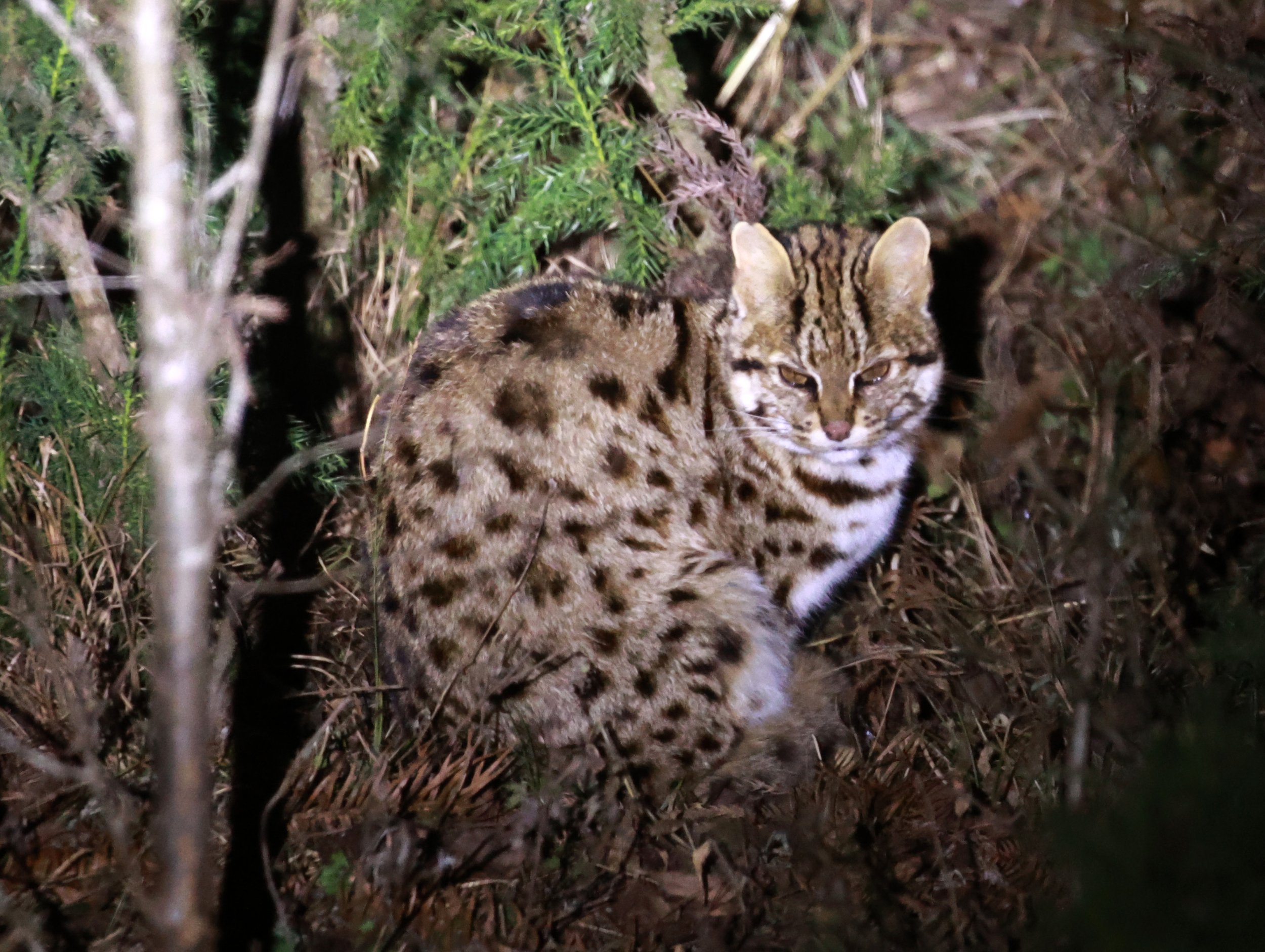
Leopard Cat (Prionailurus bengalensis) Tangjiahe Nature Reserve, Sichuan China
